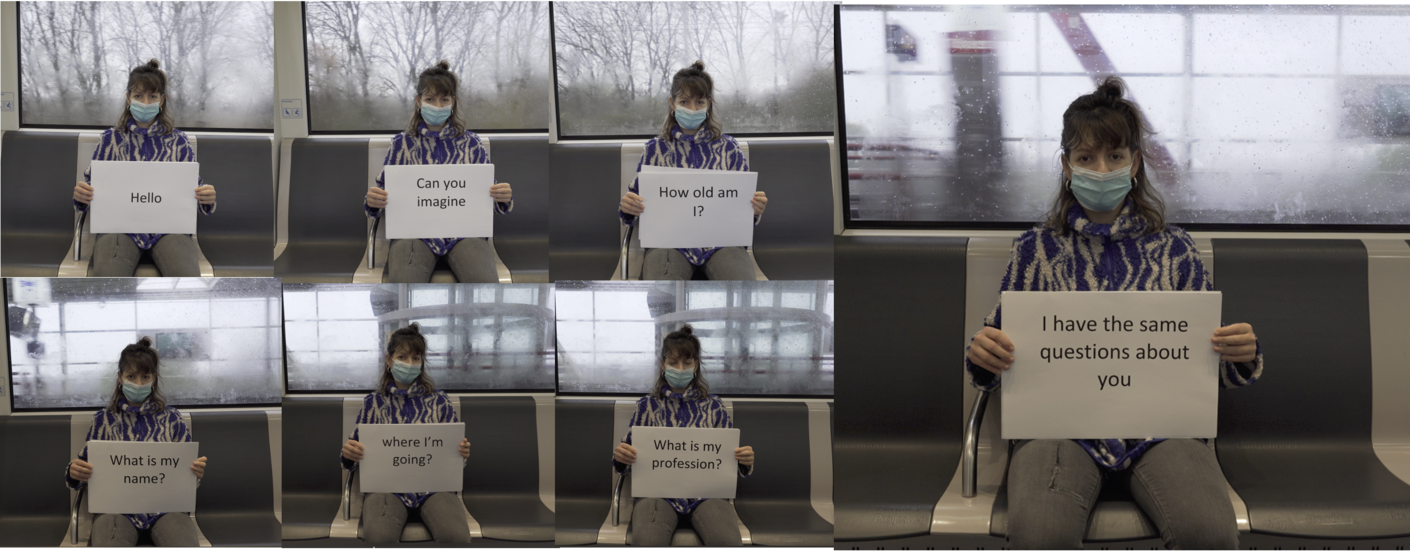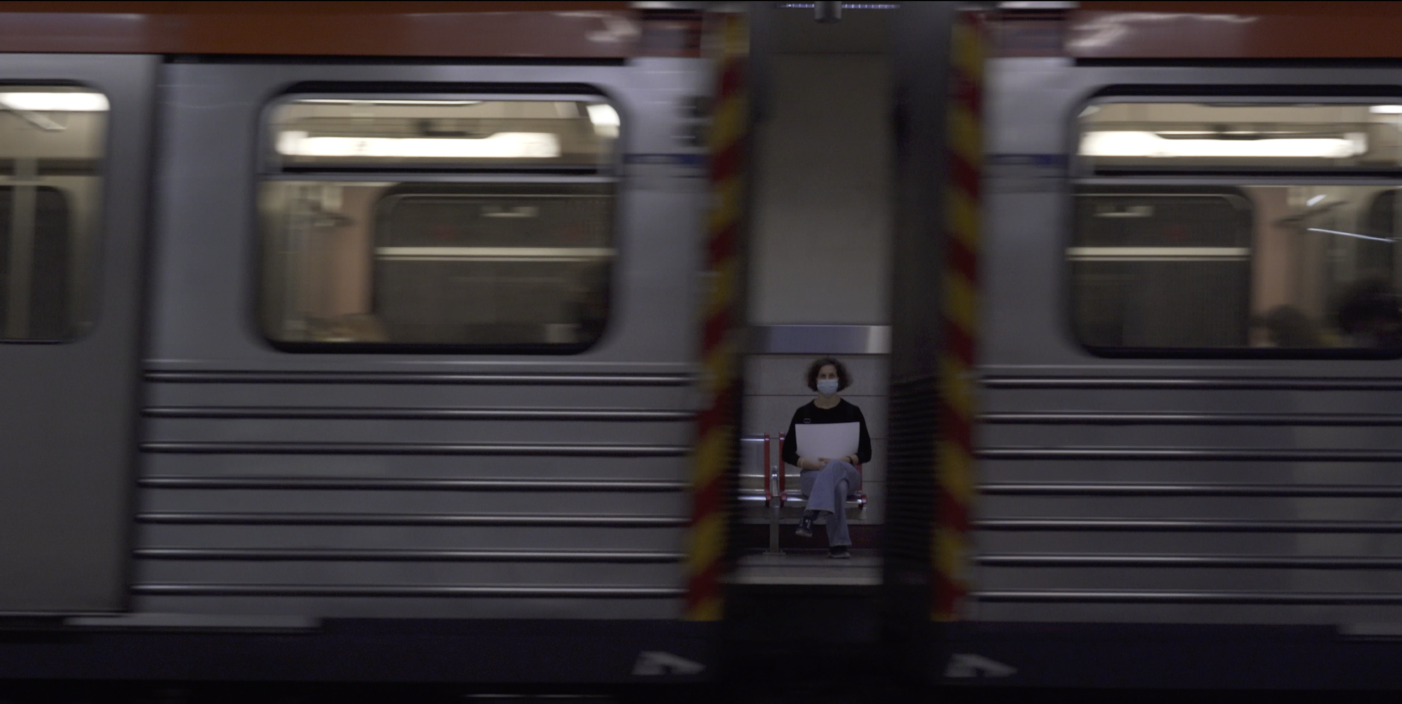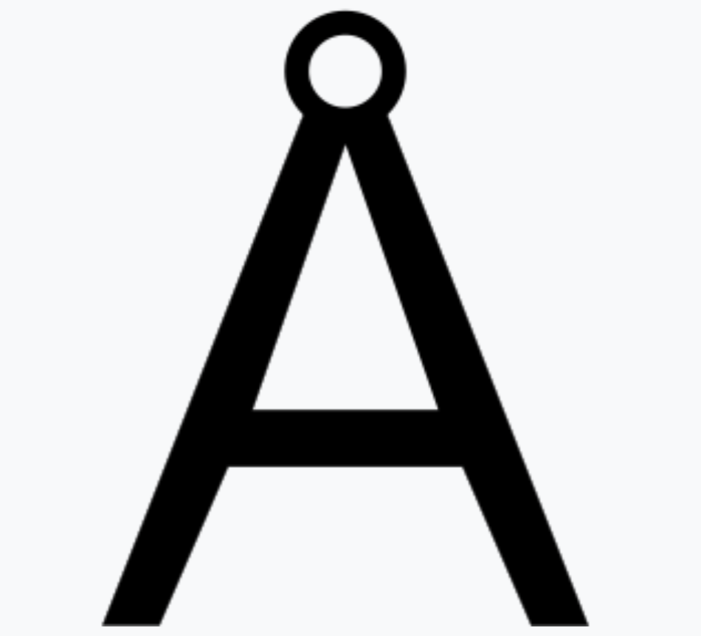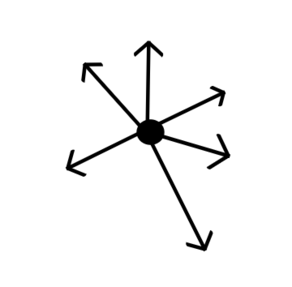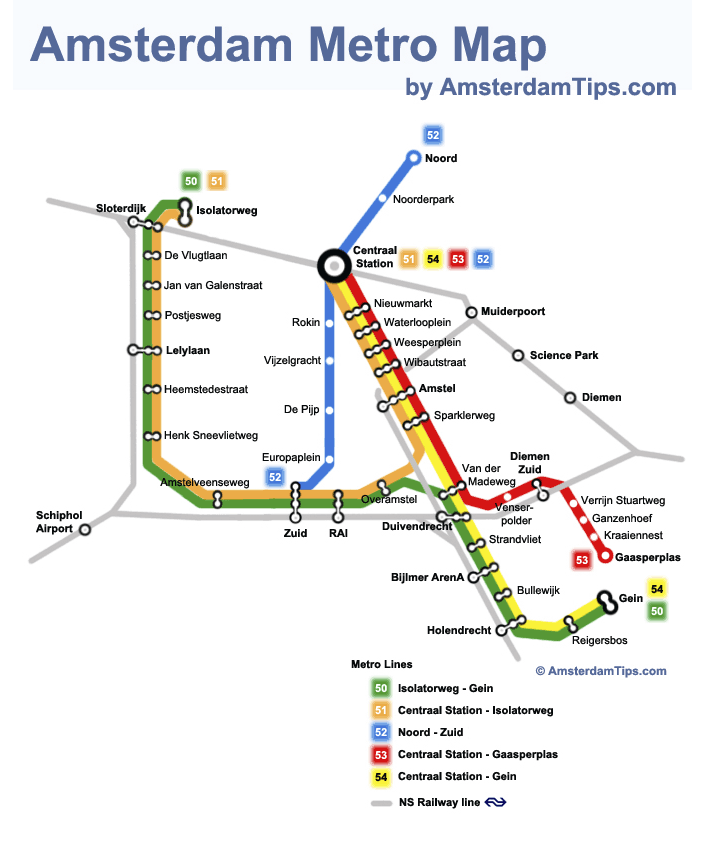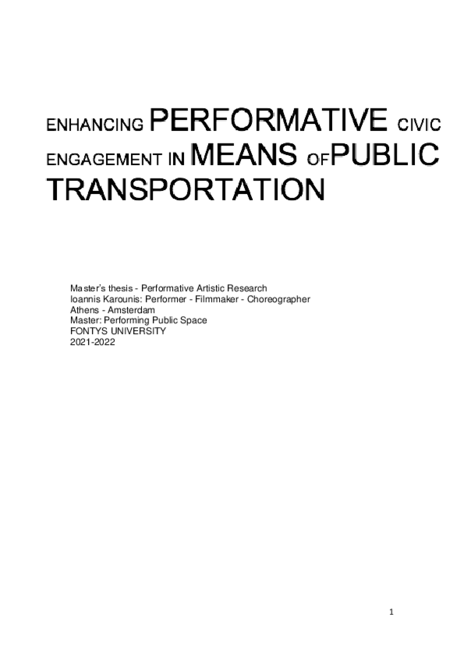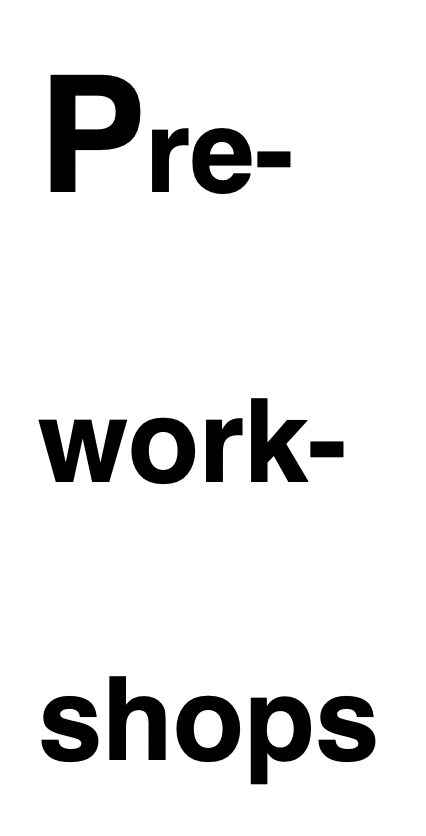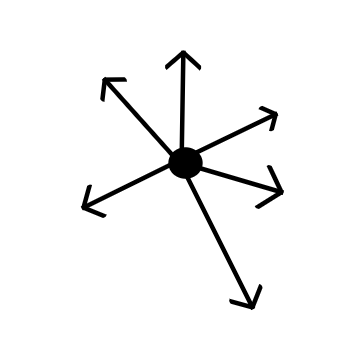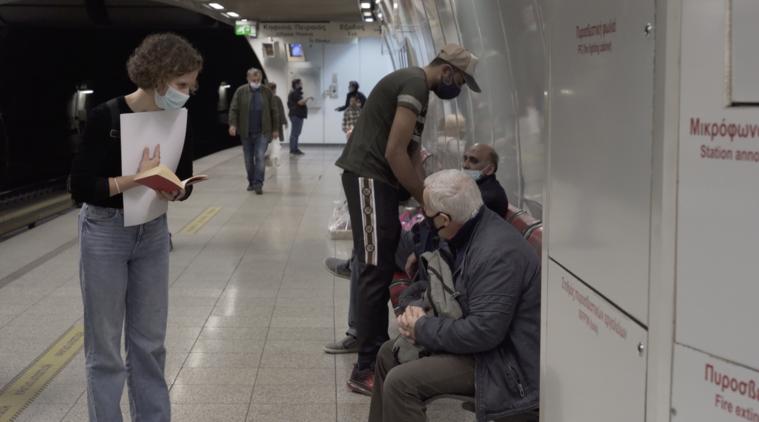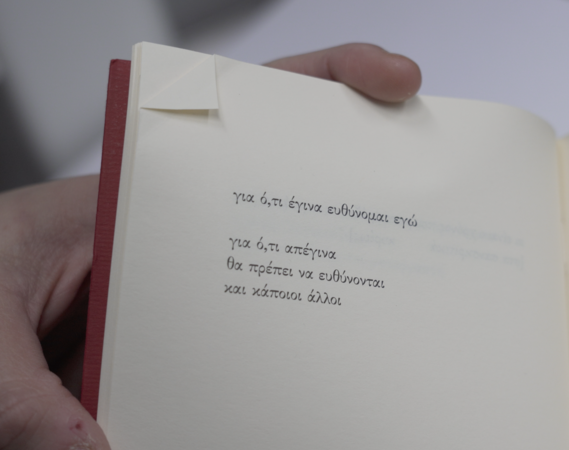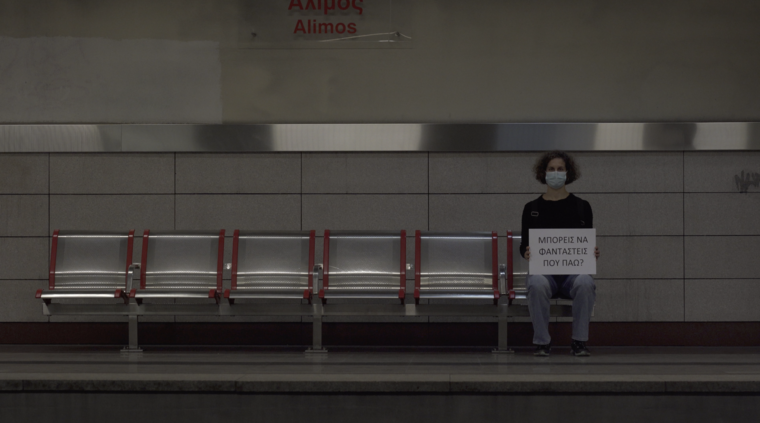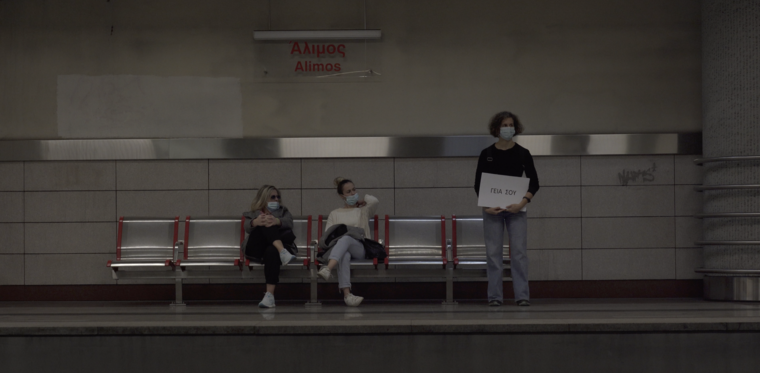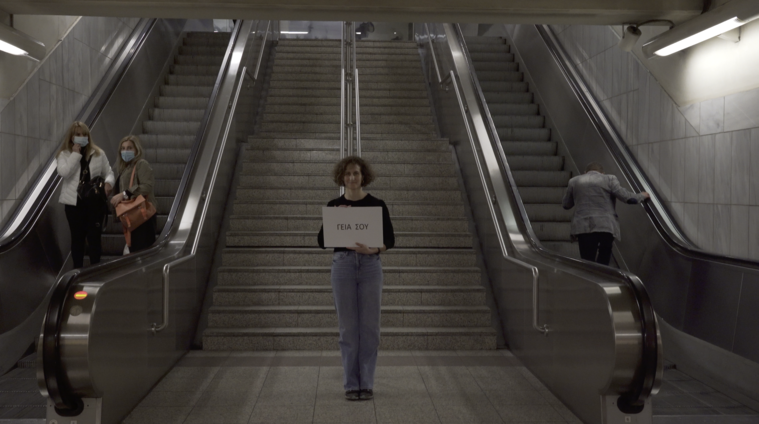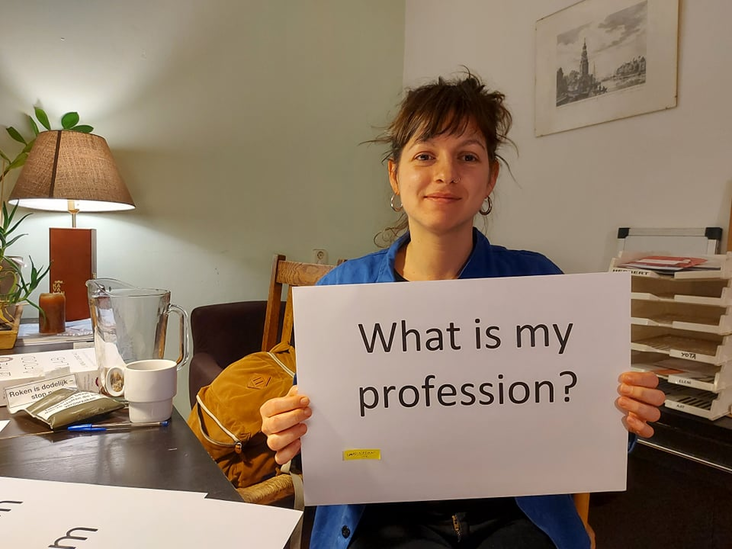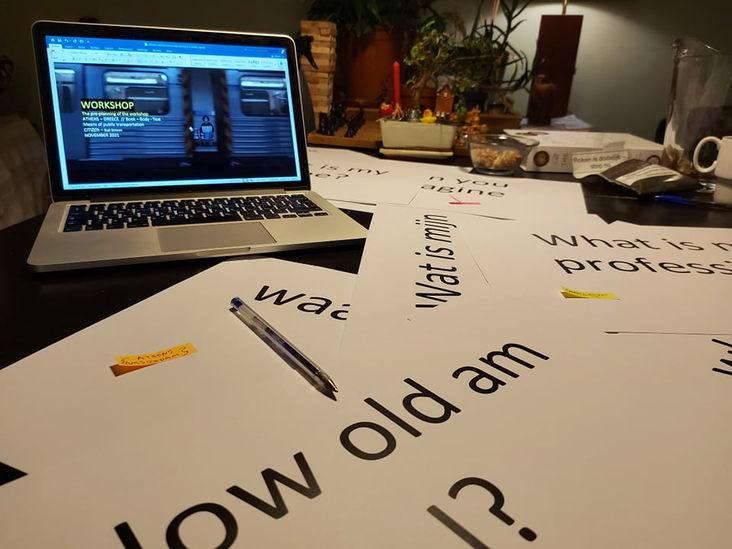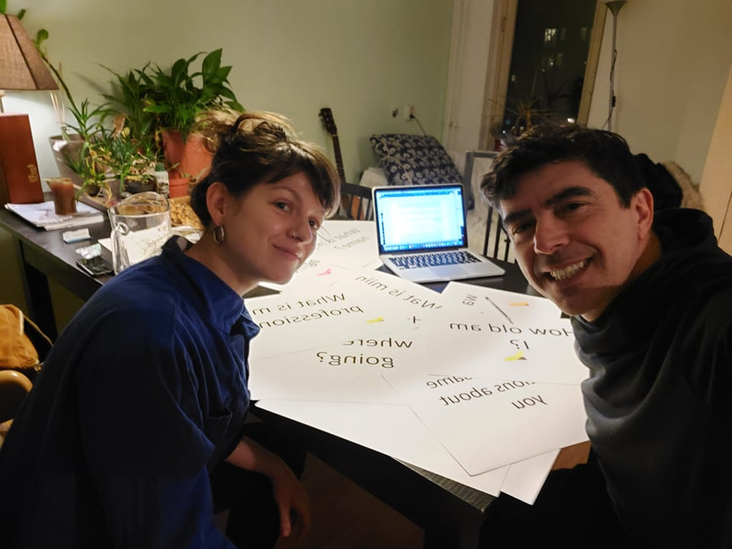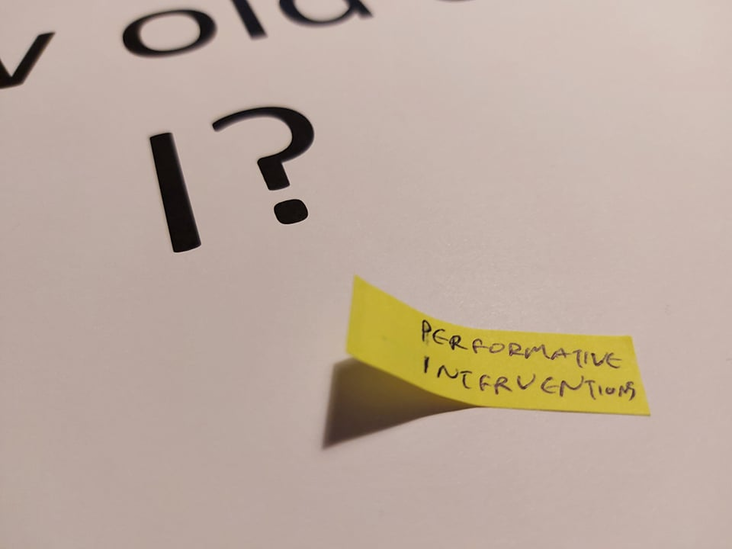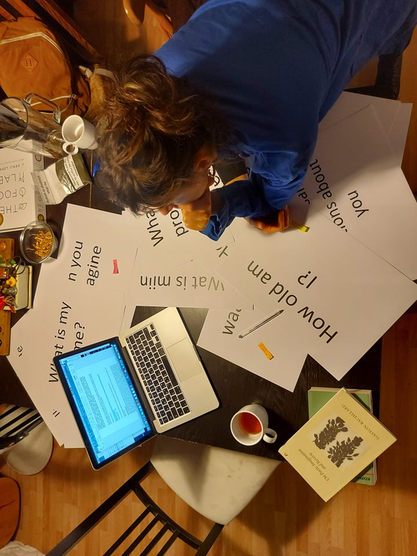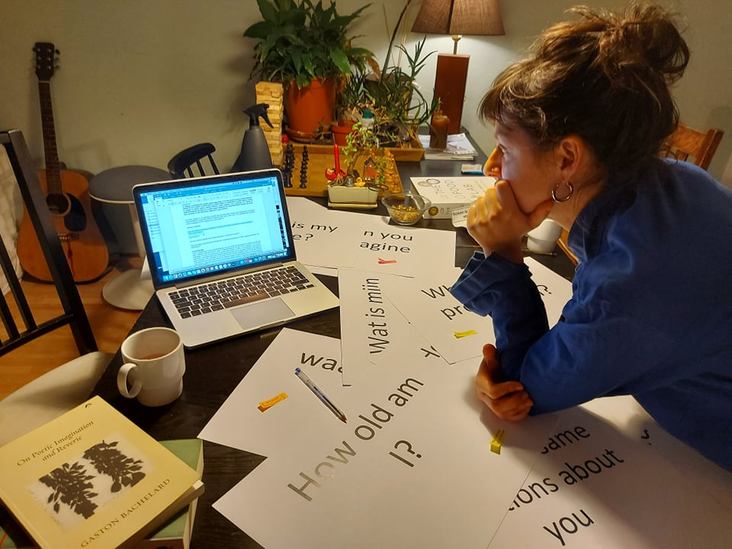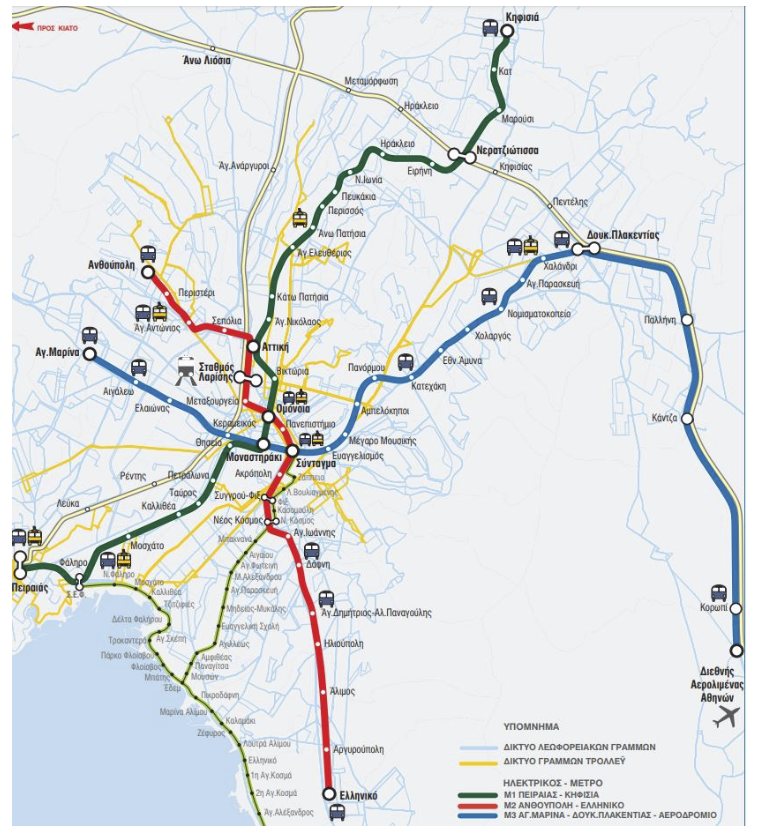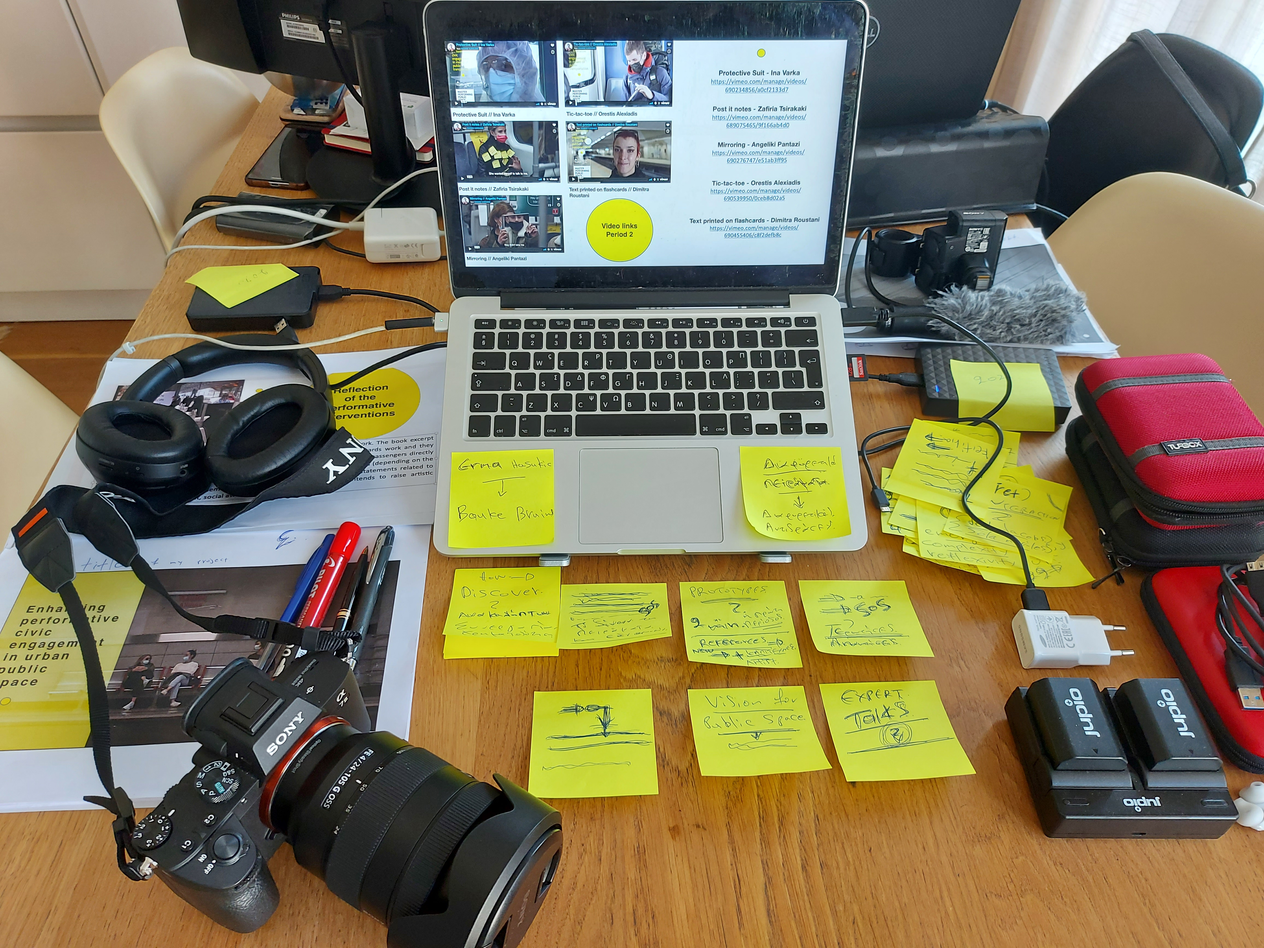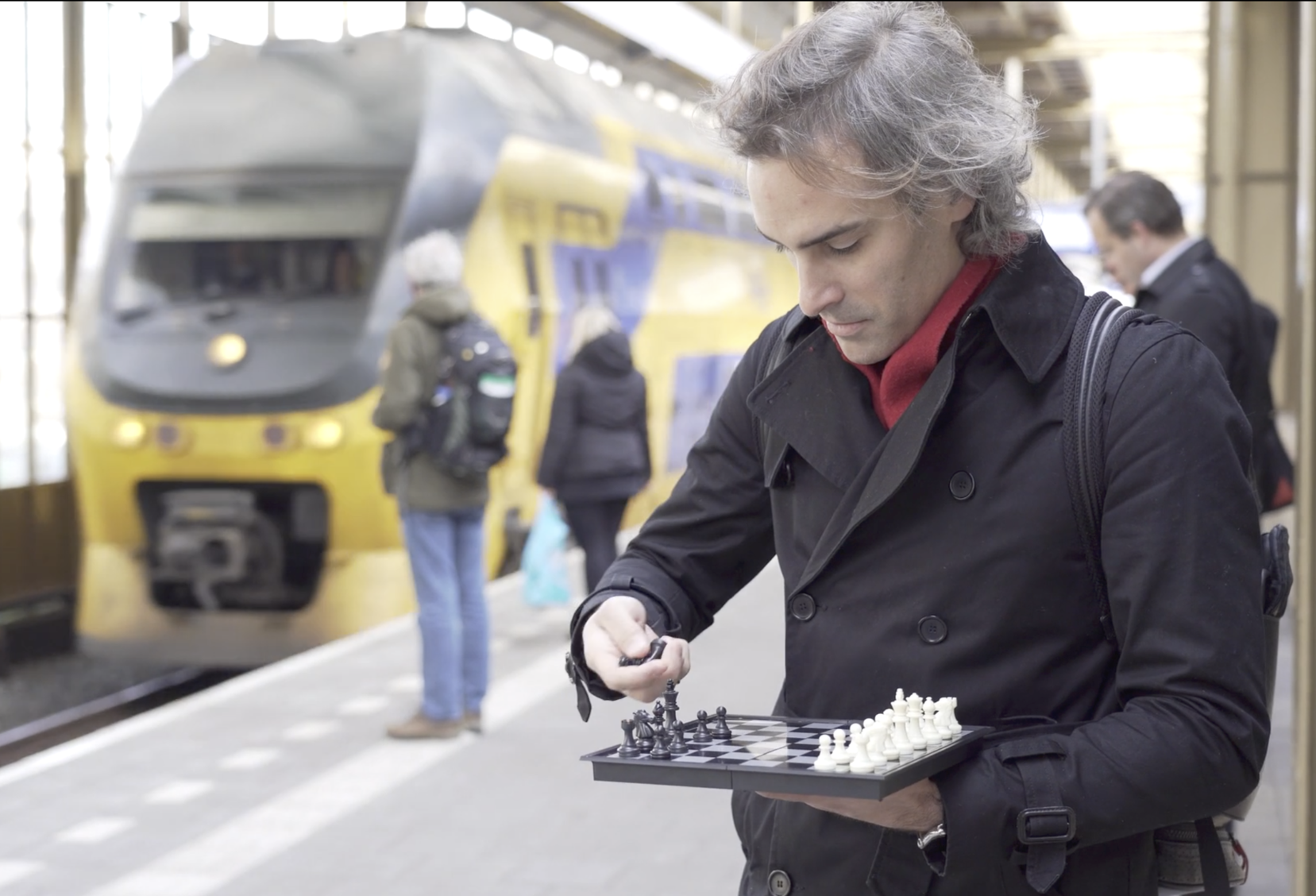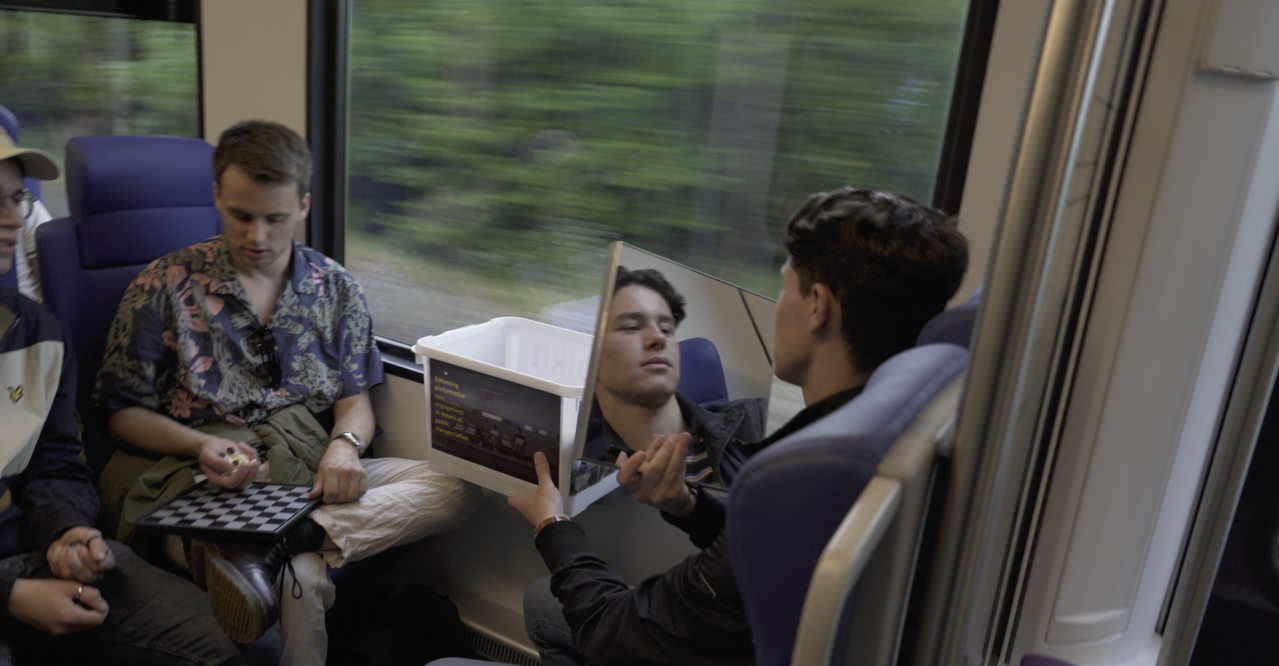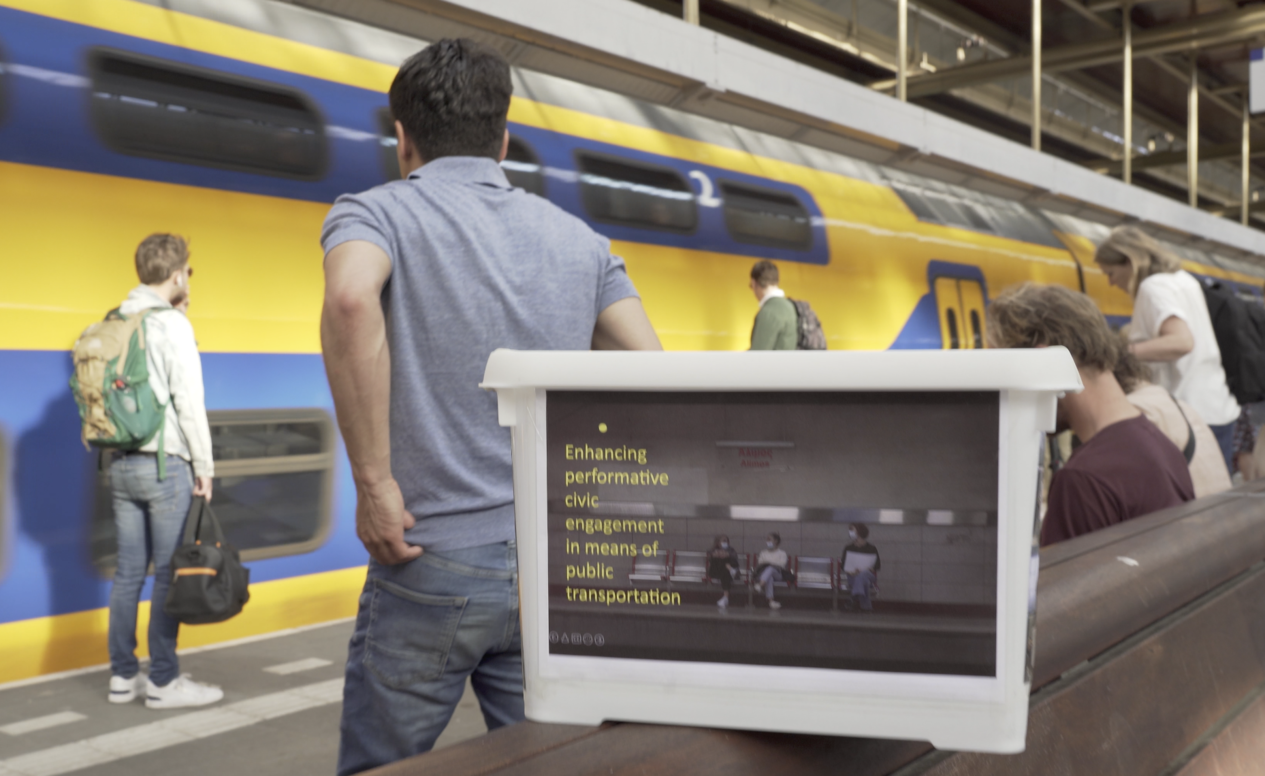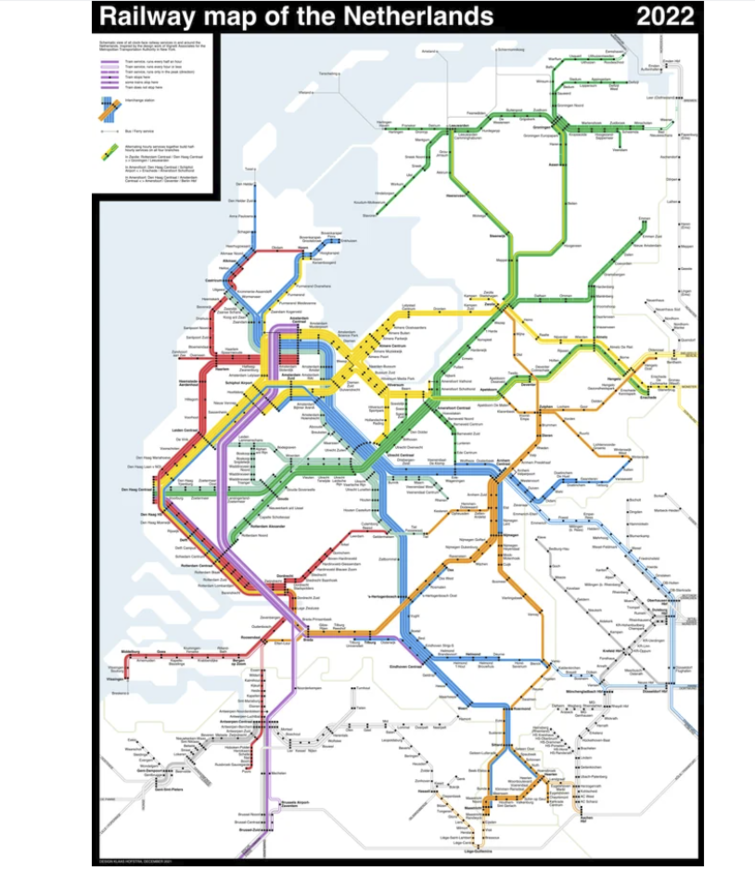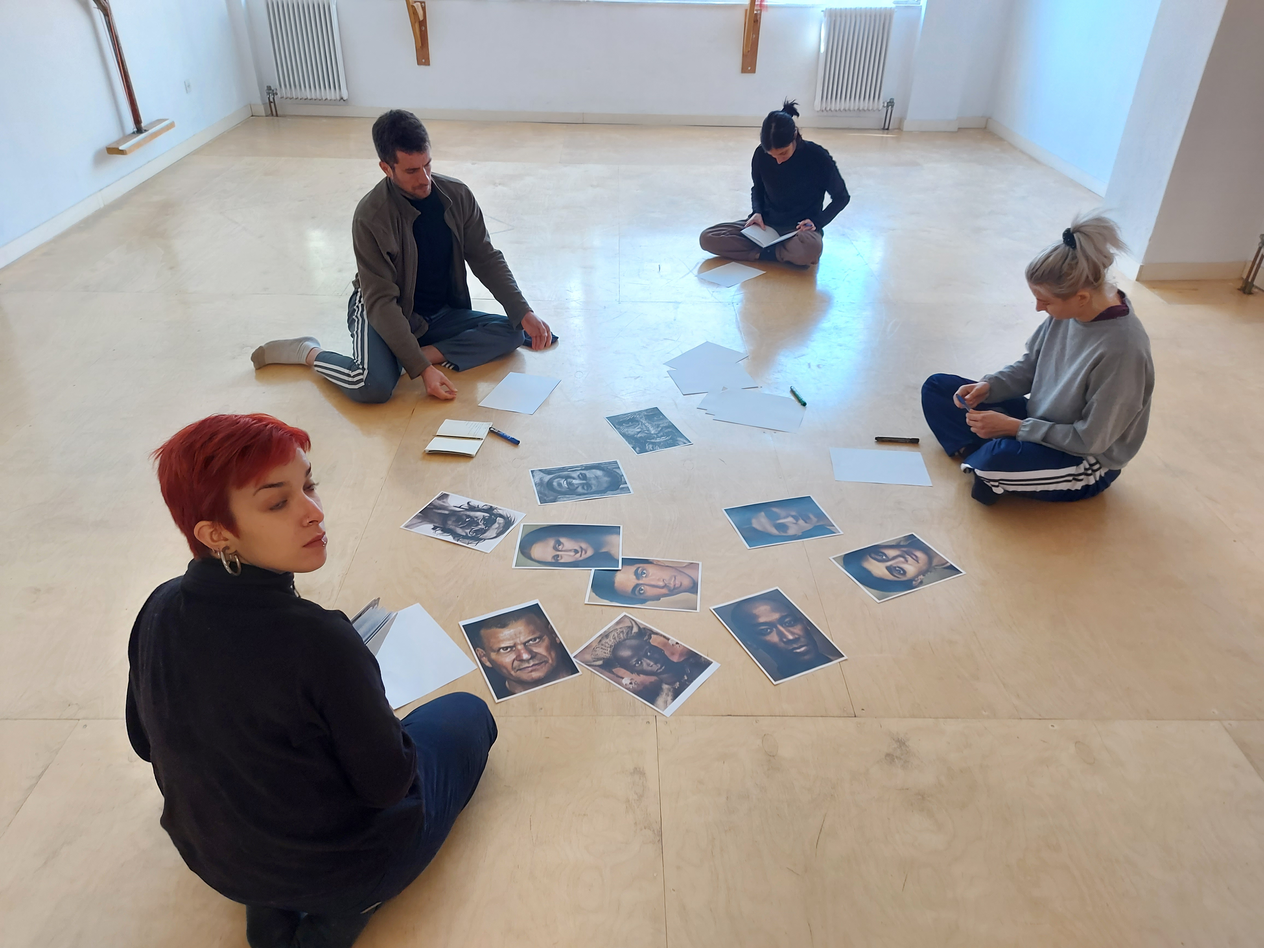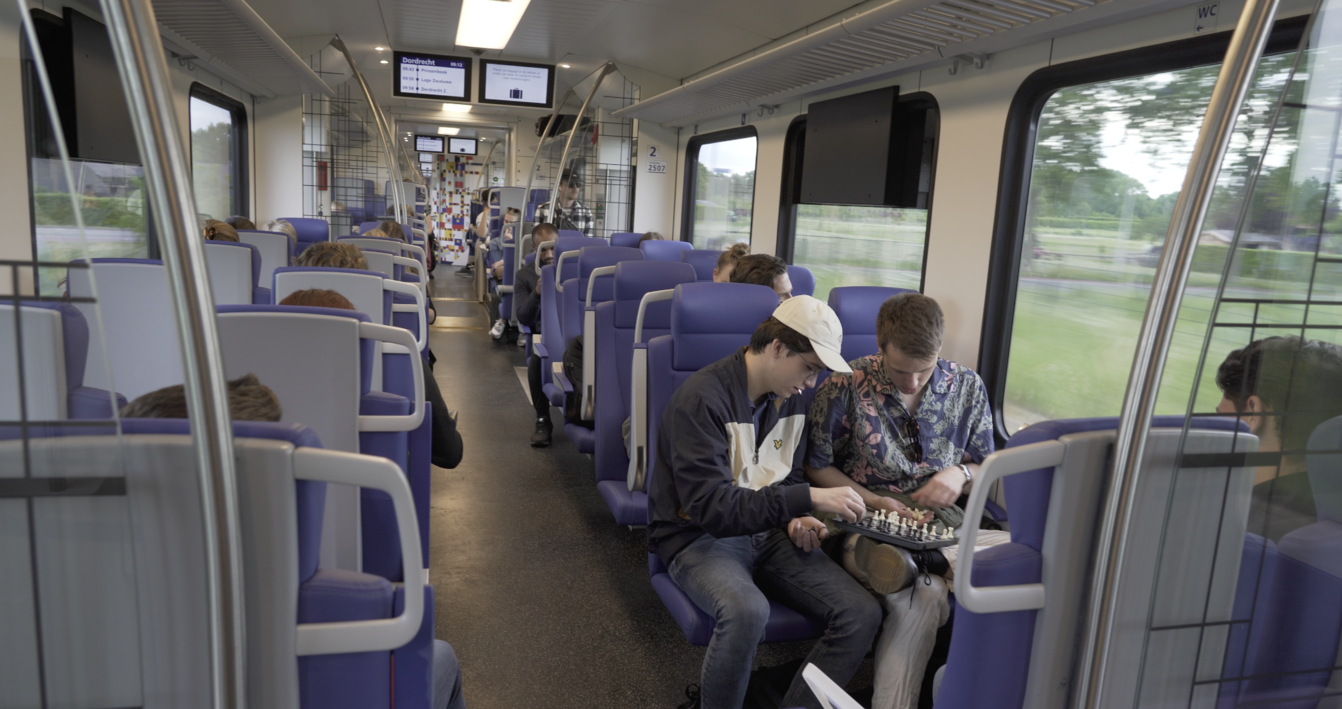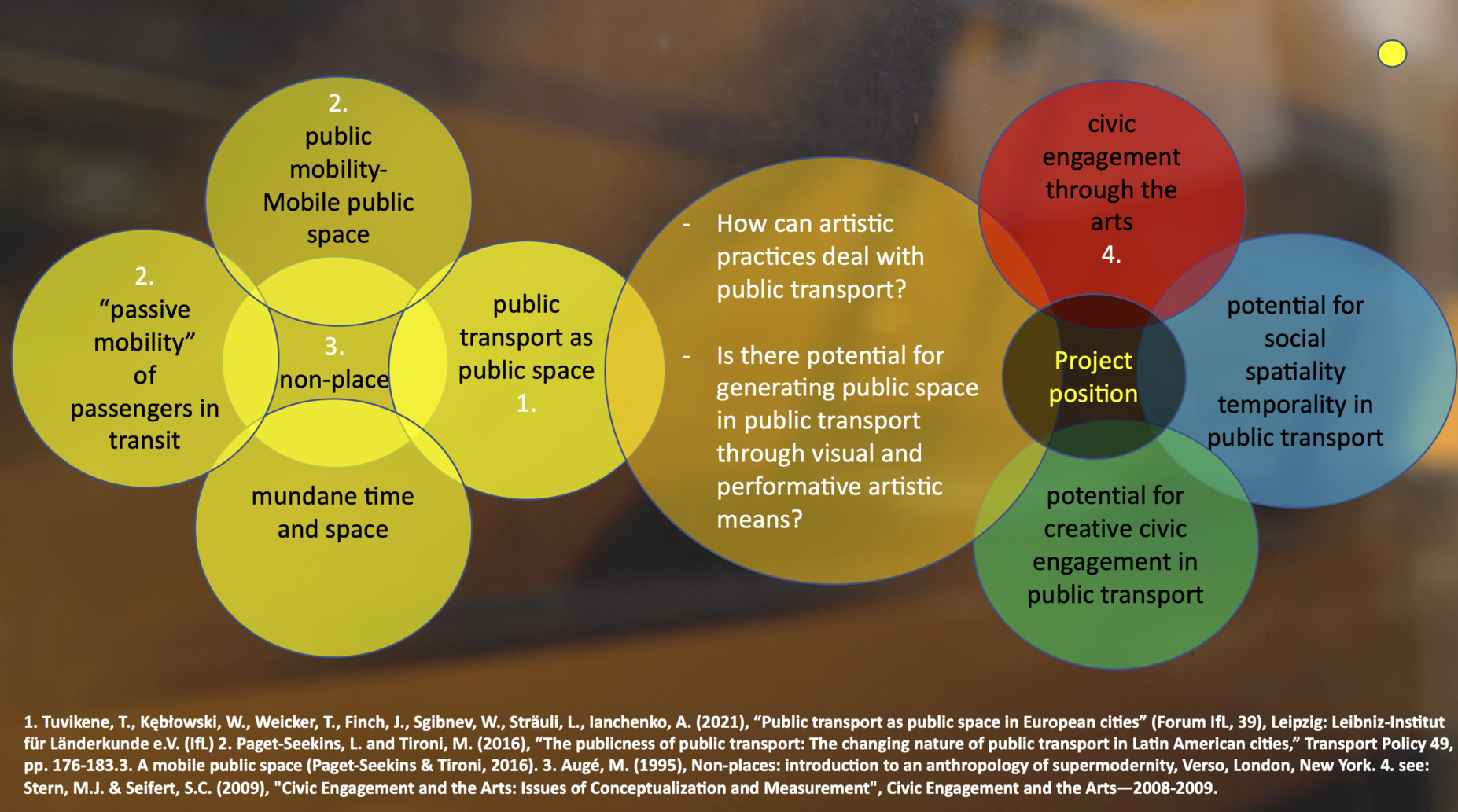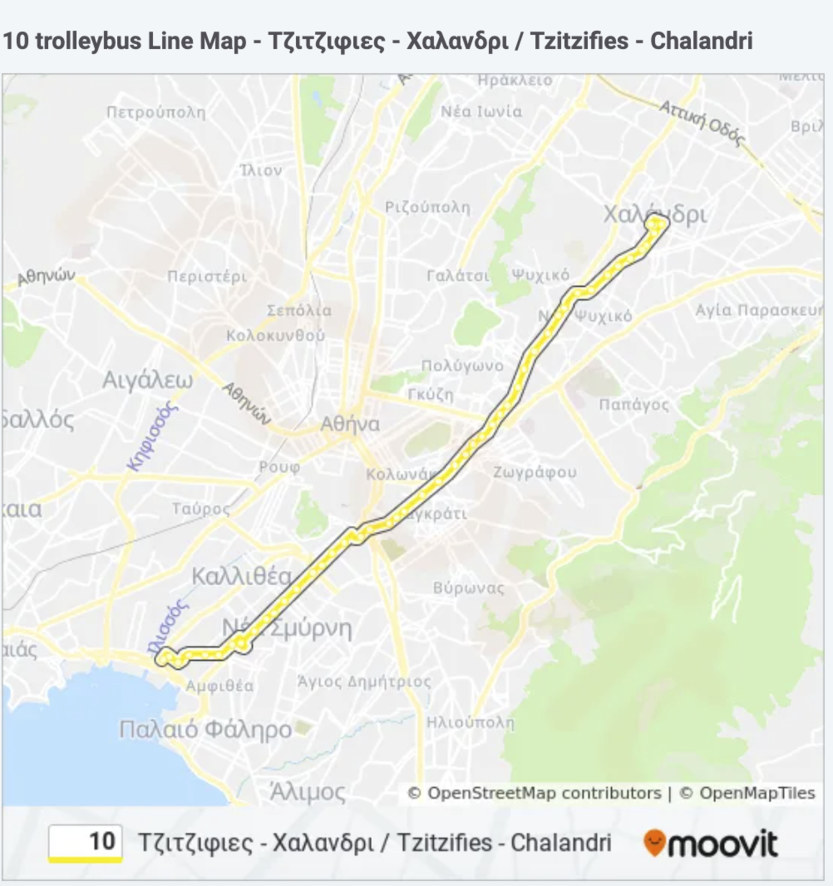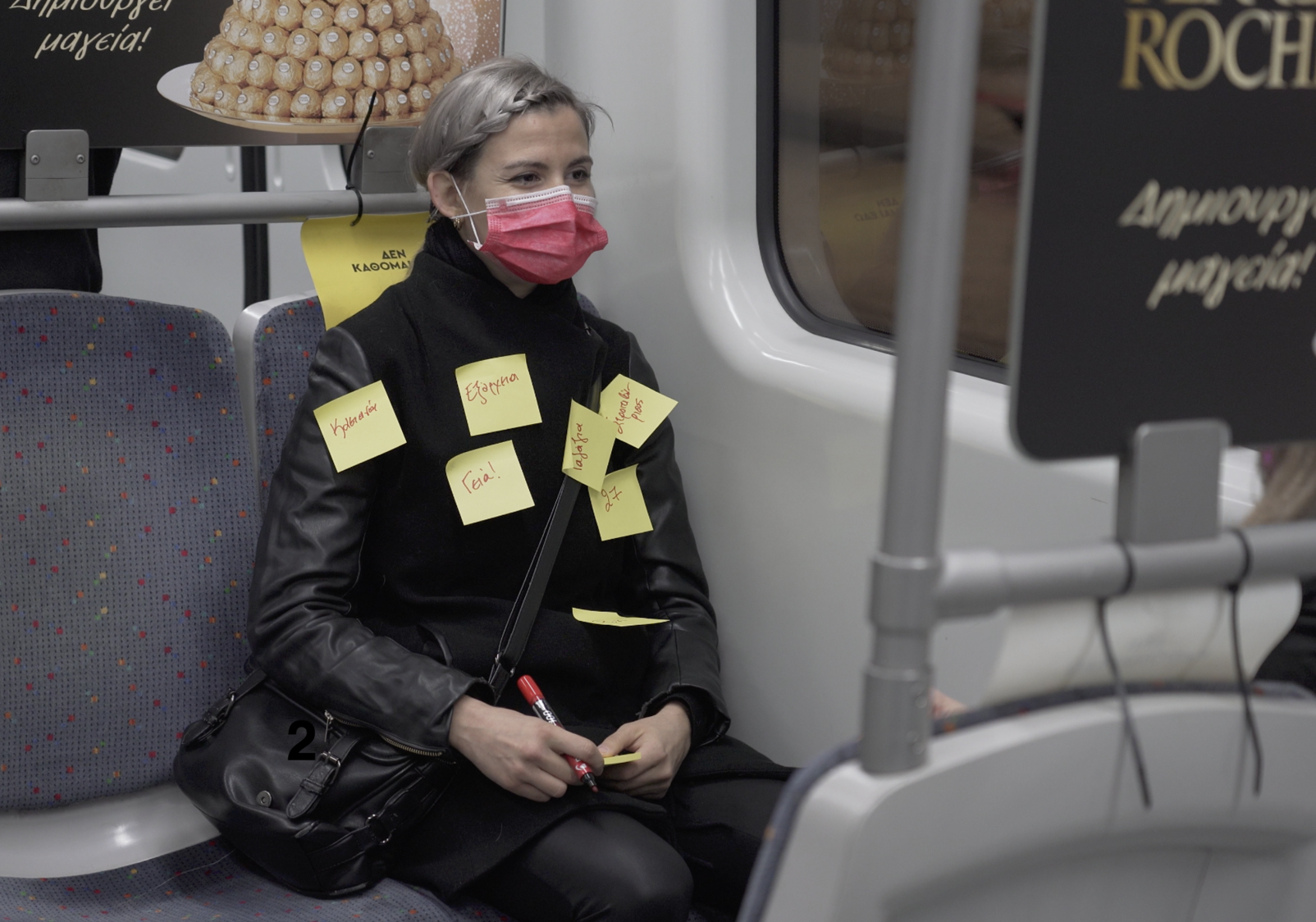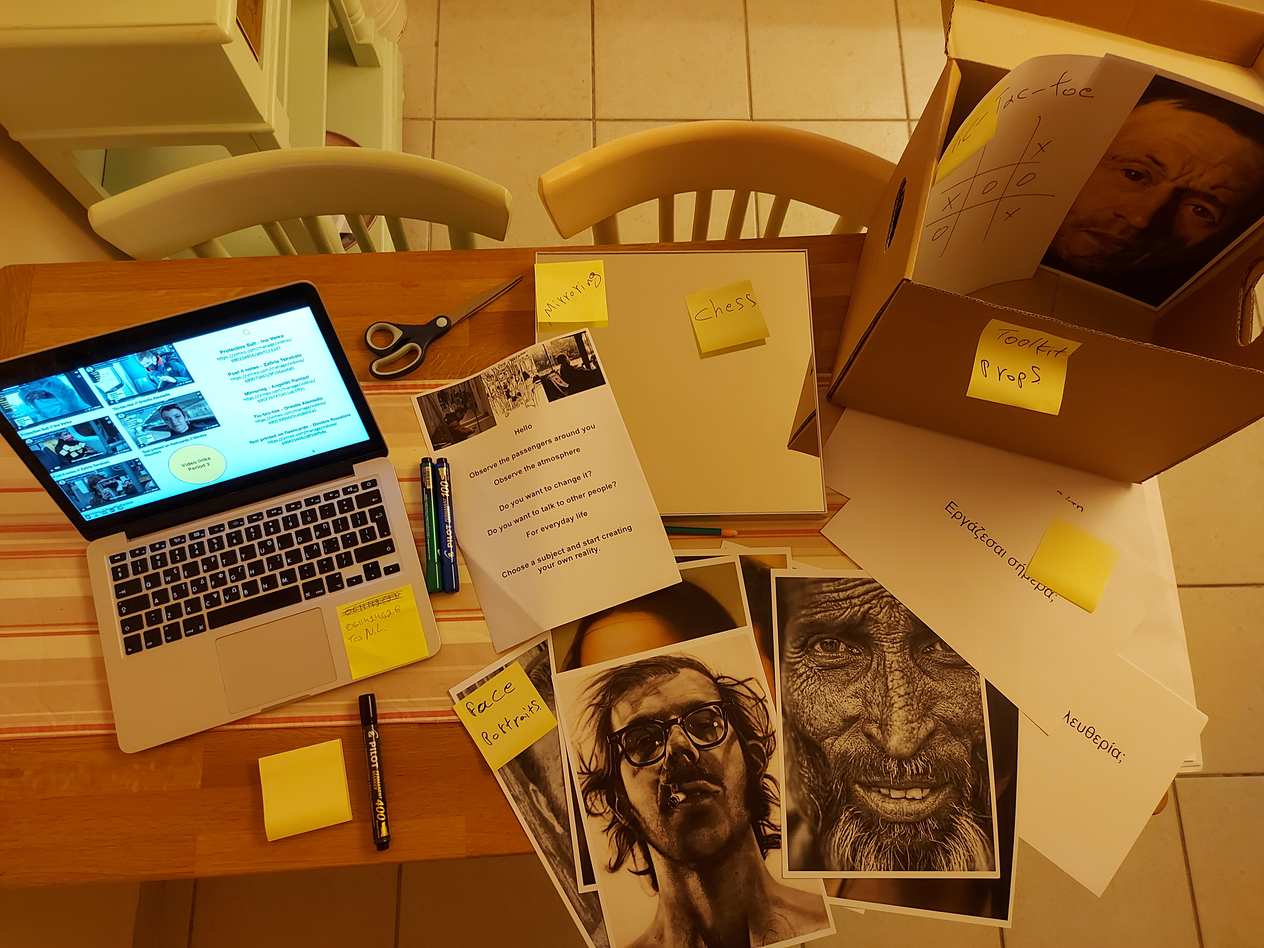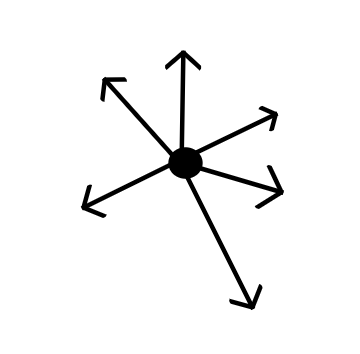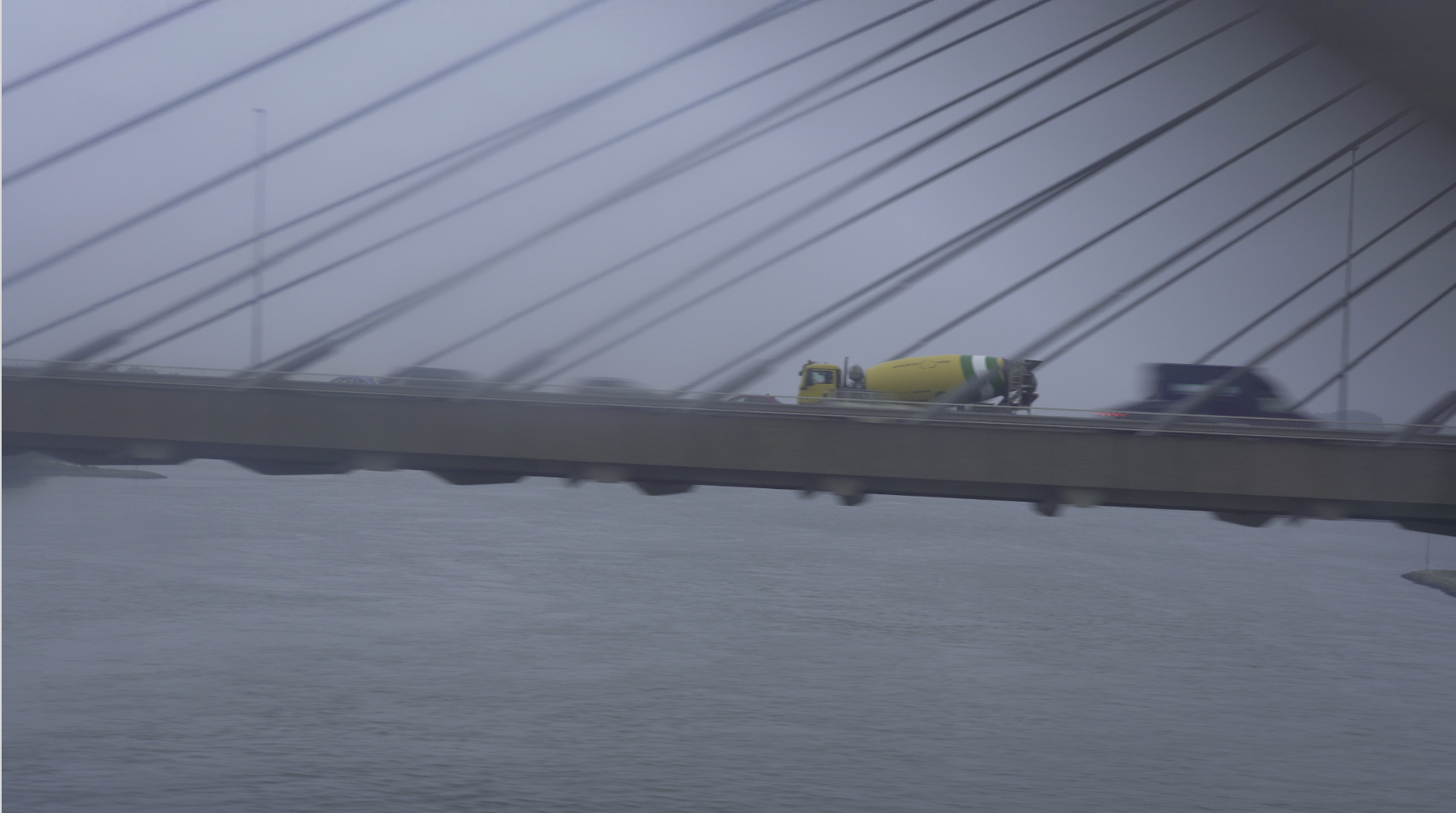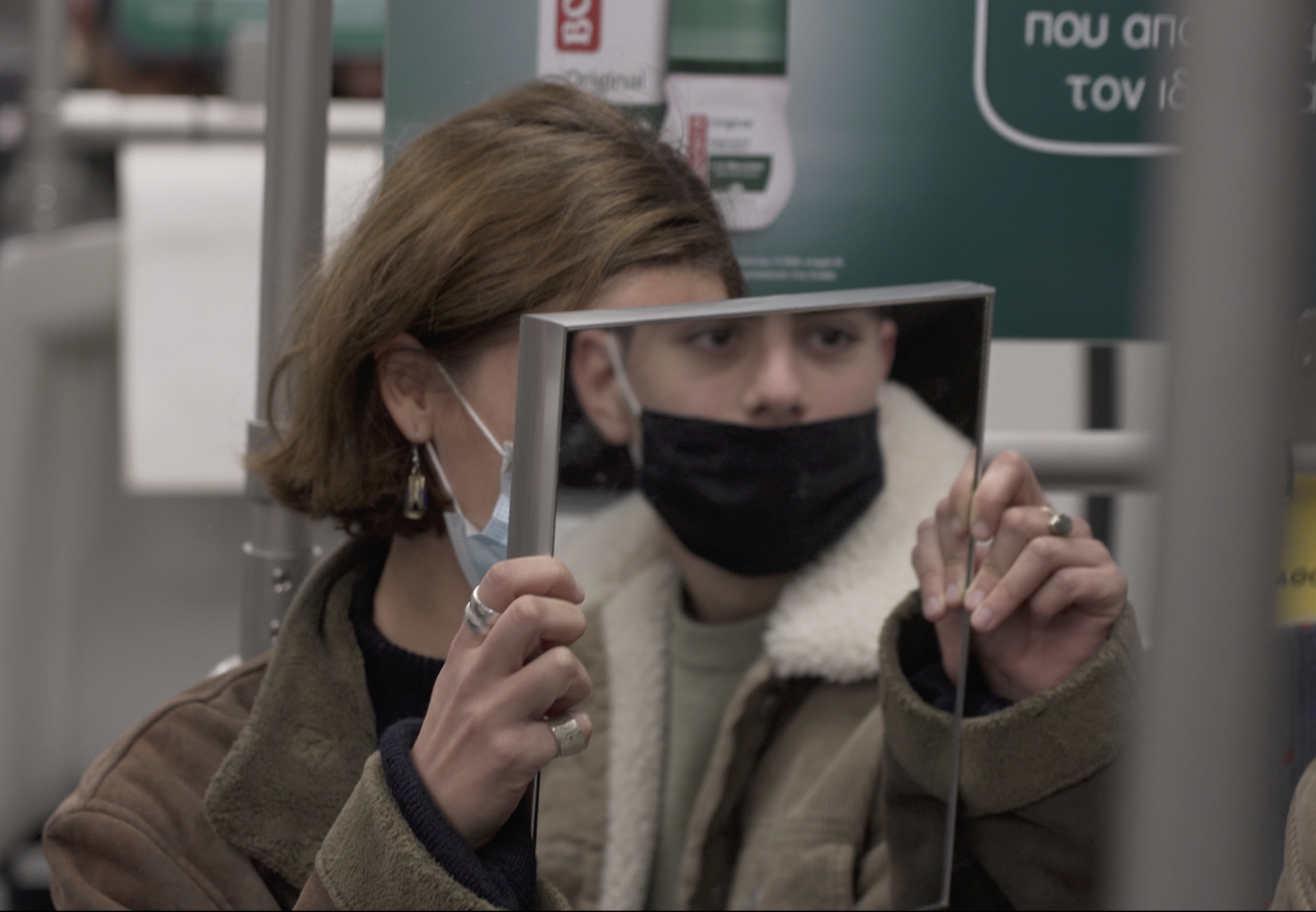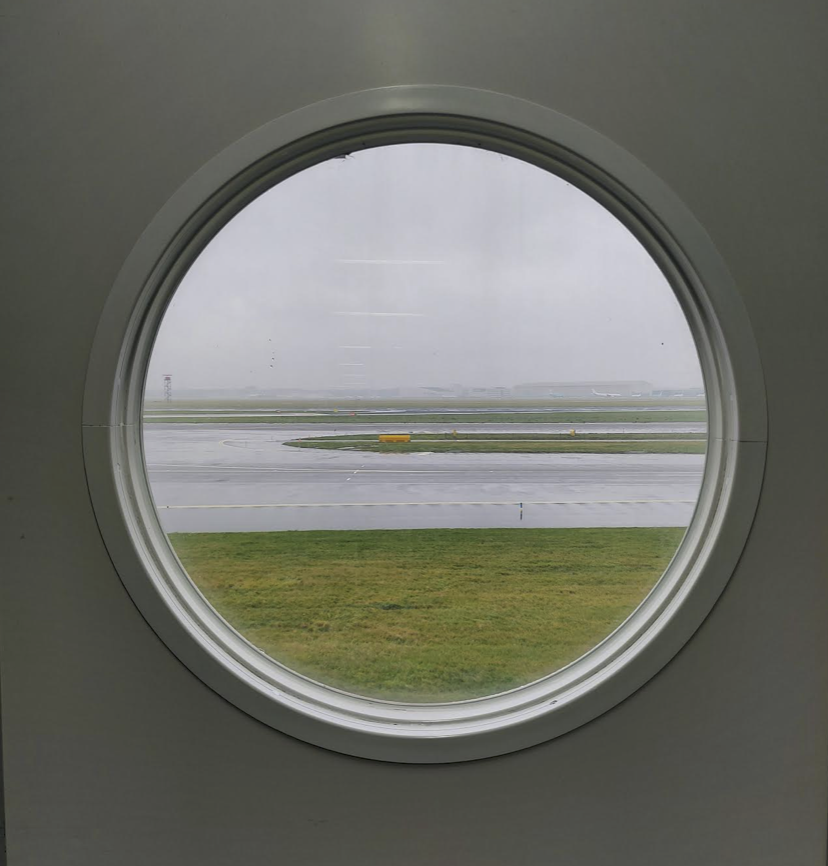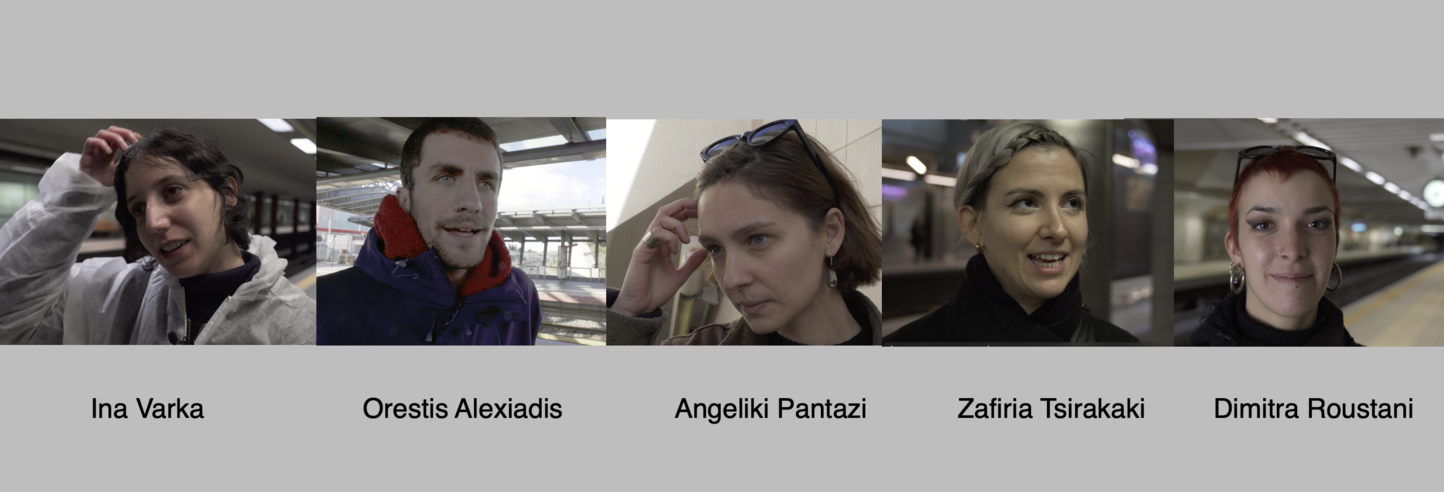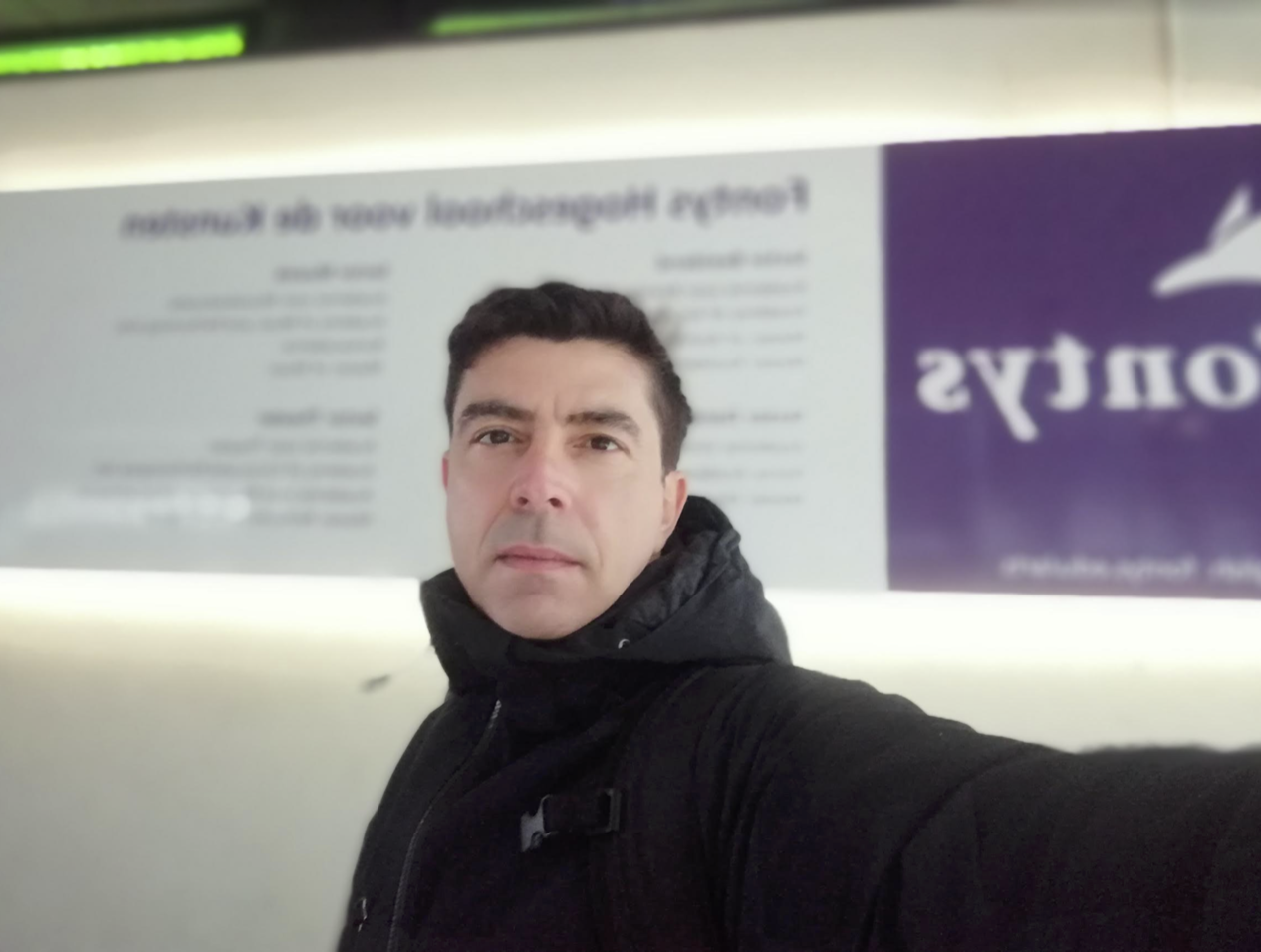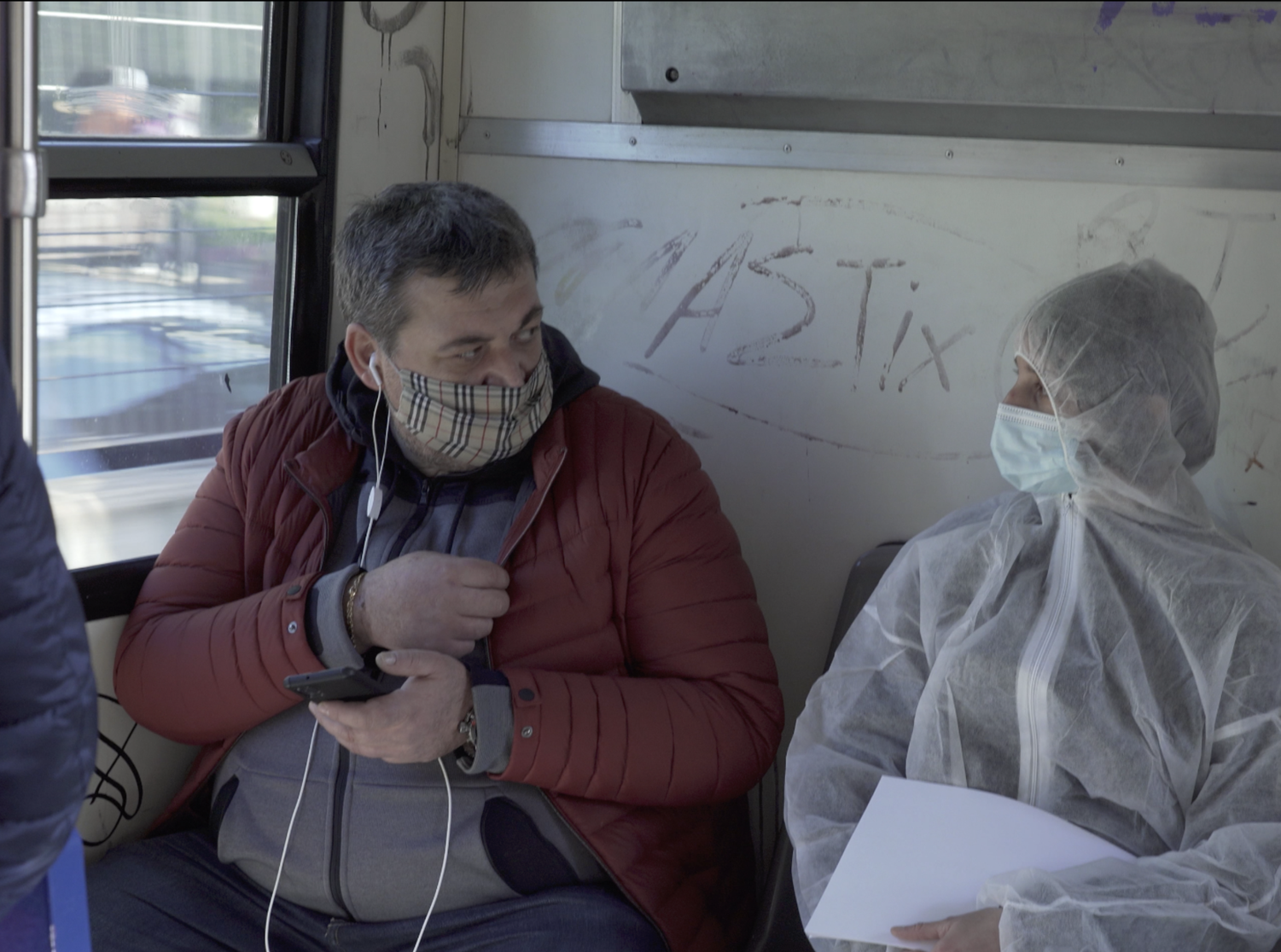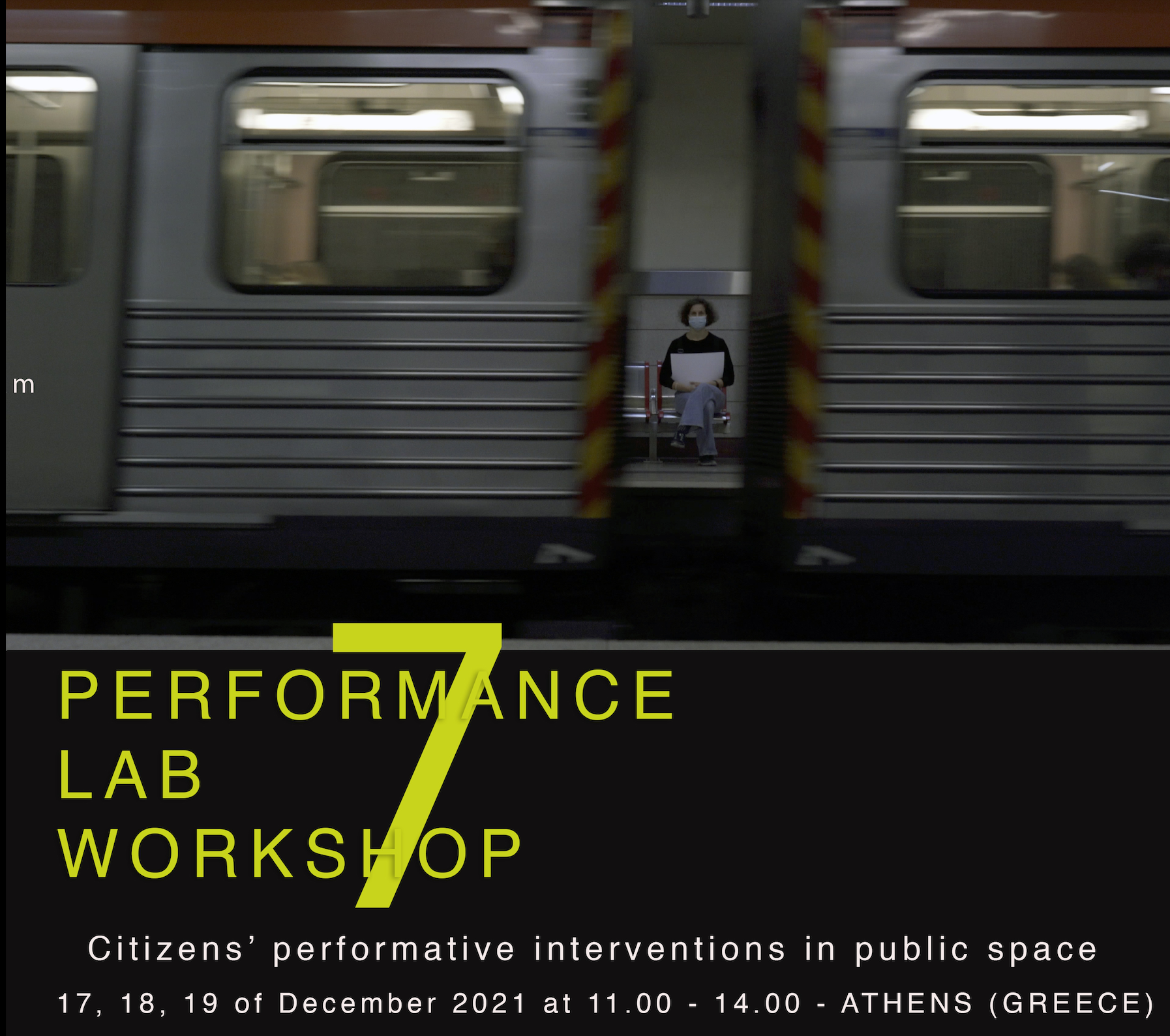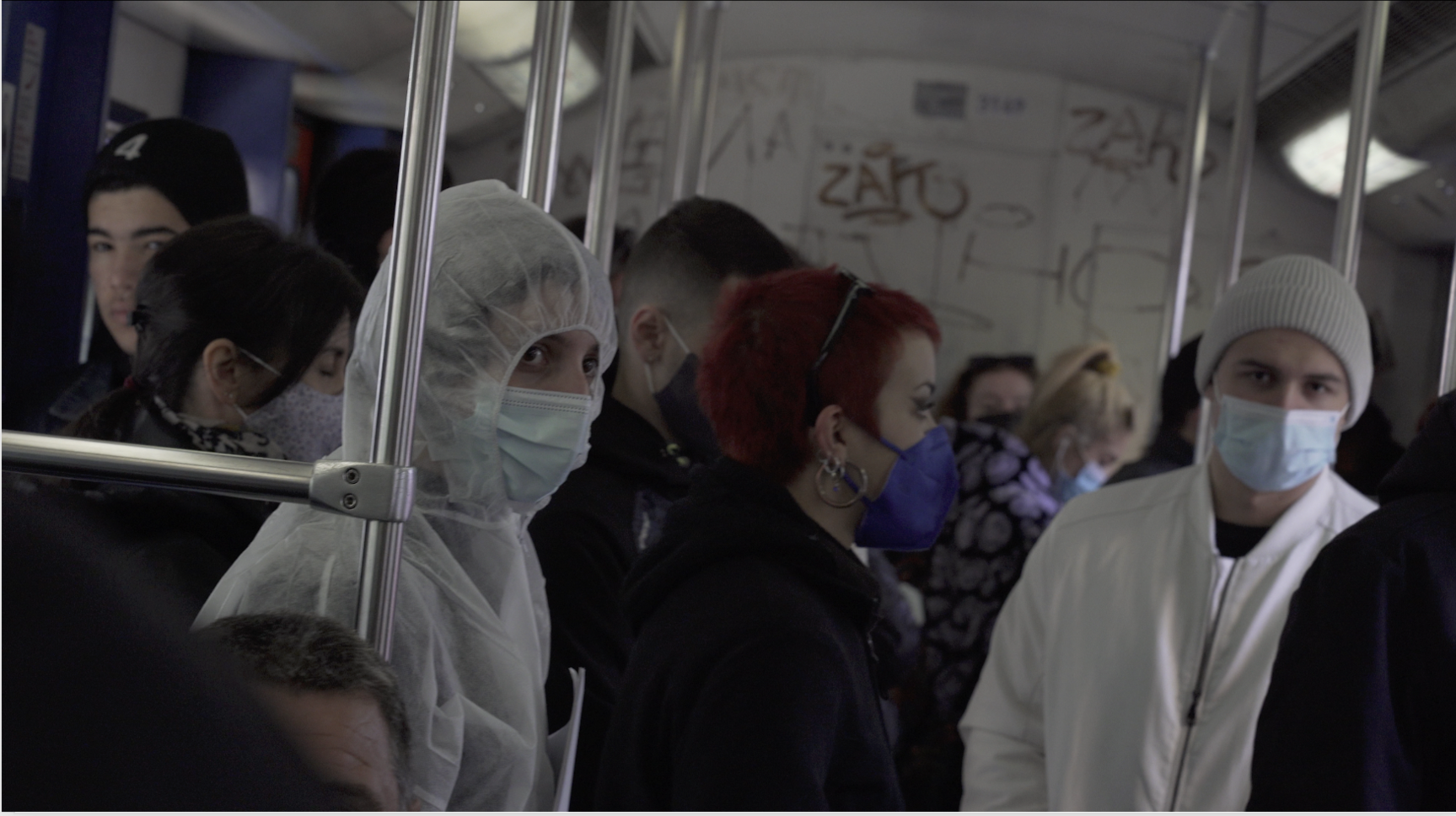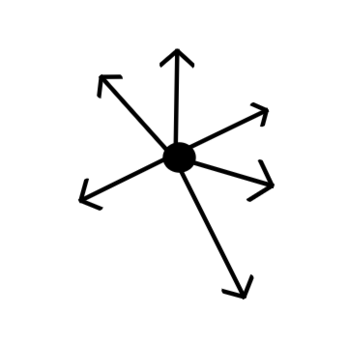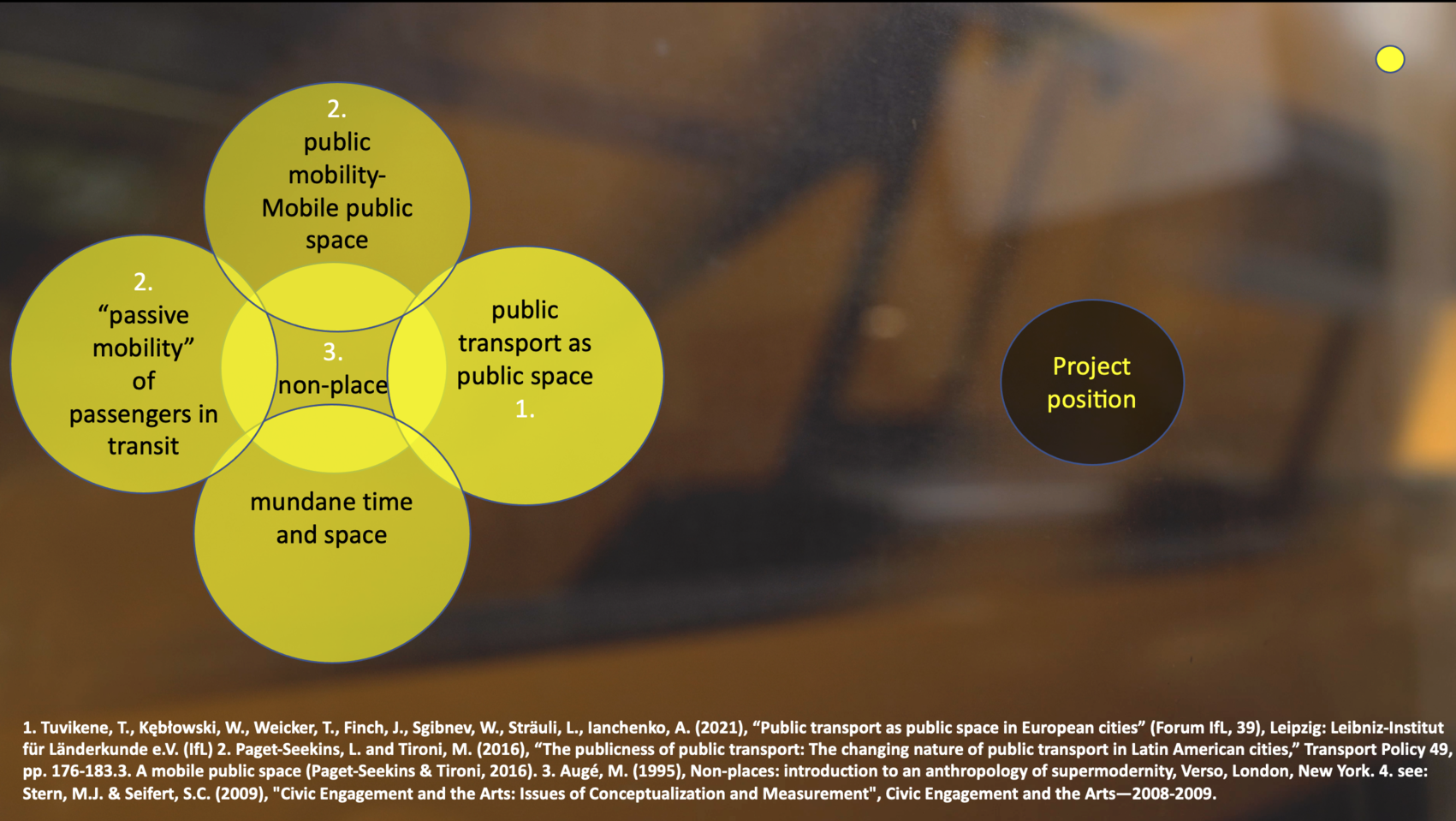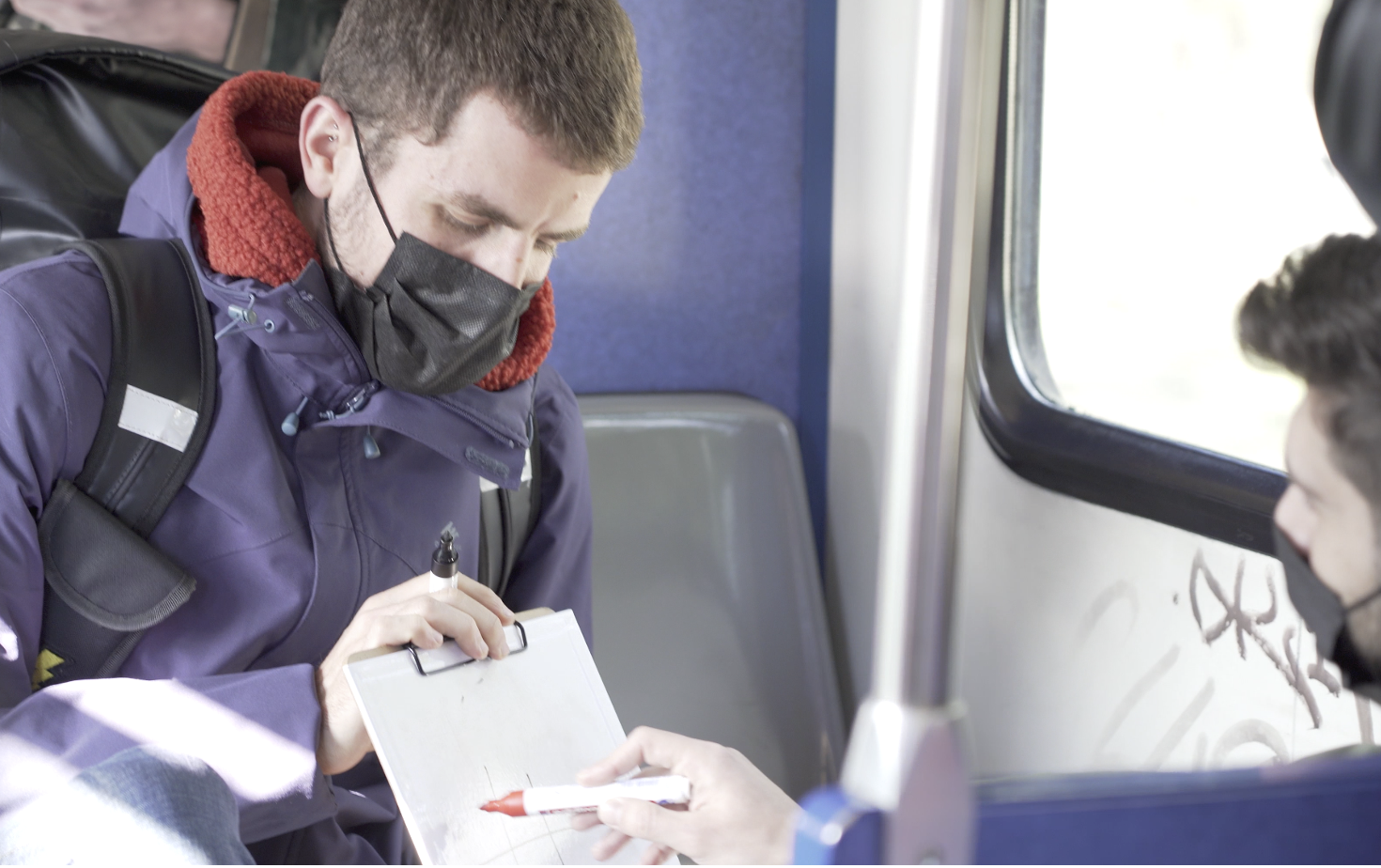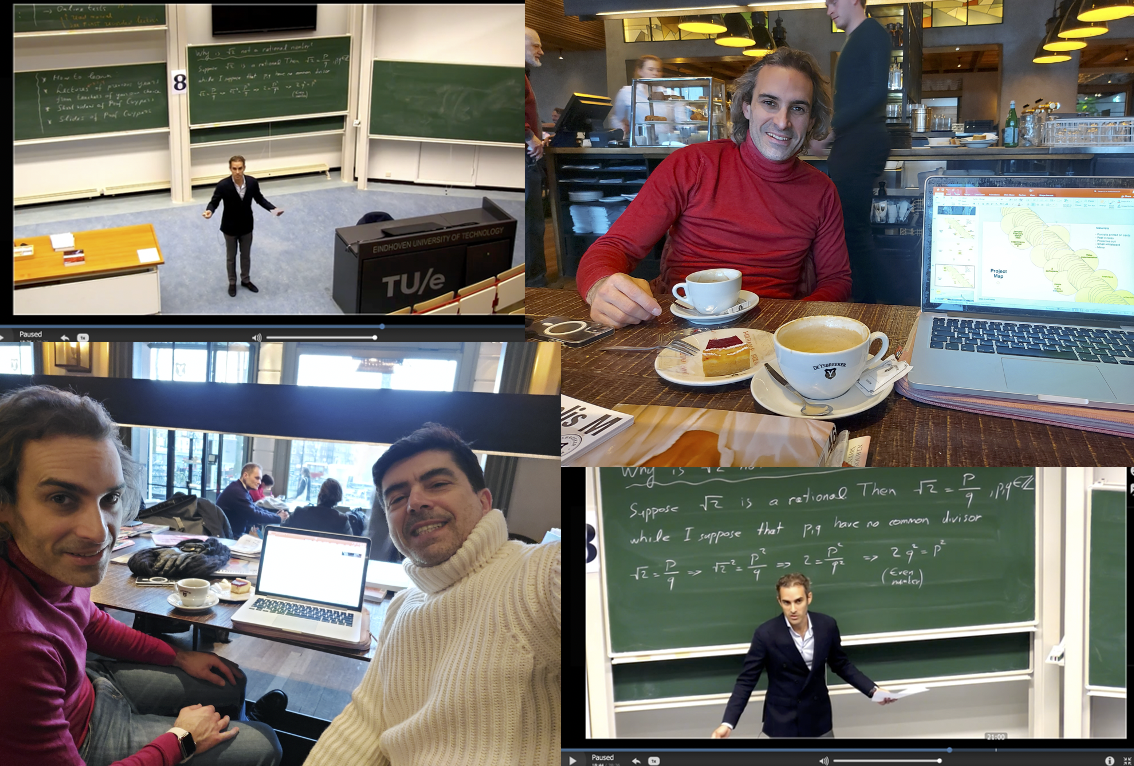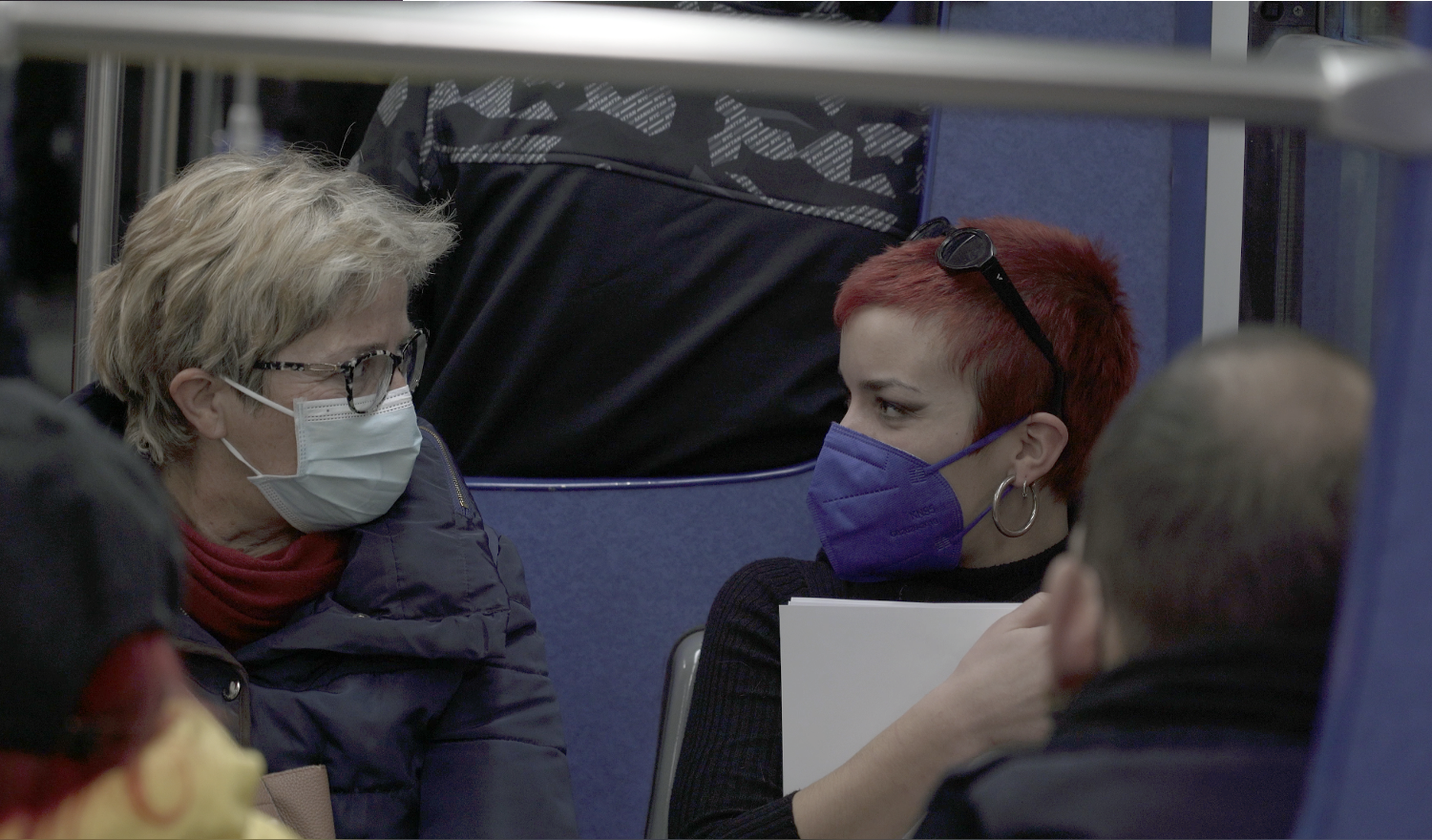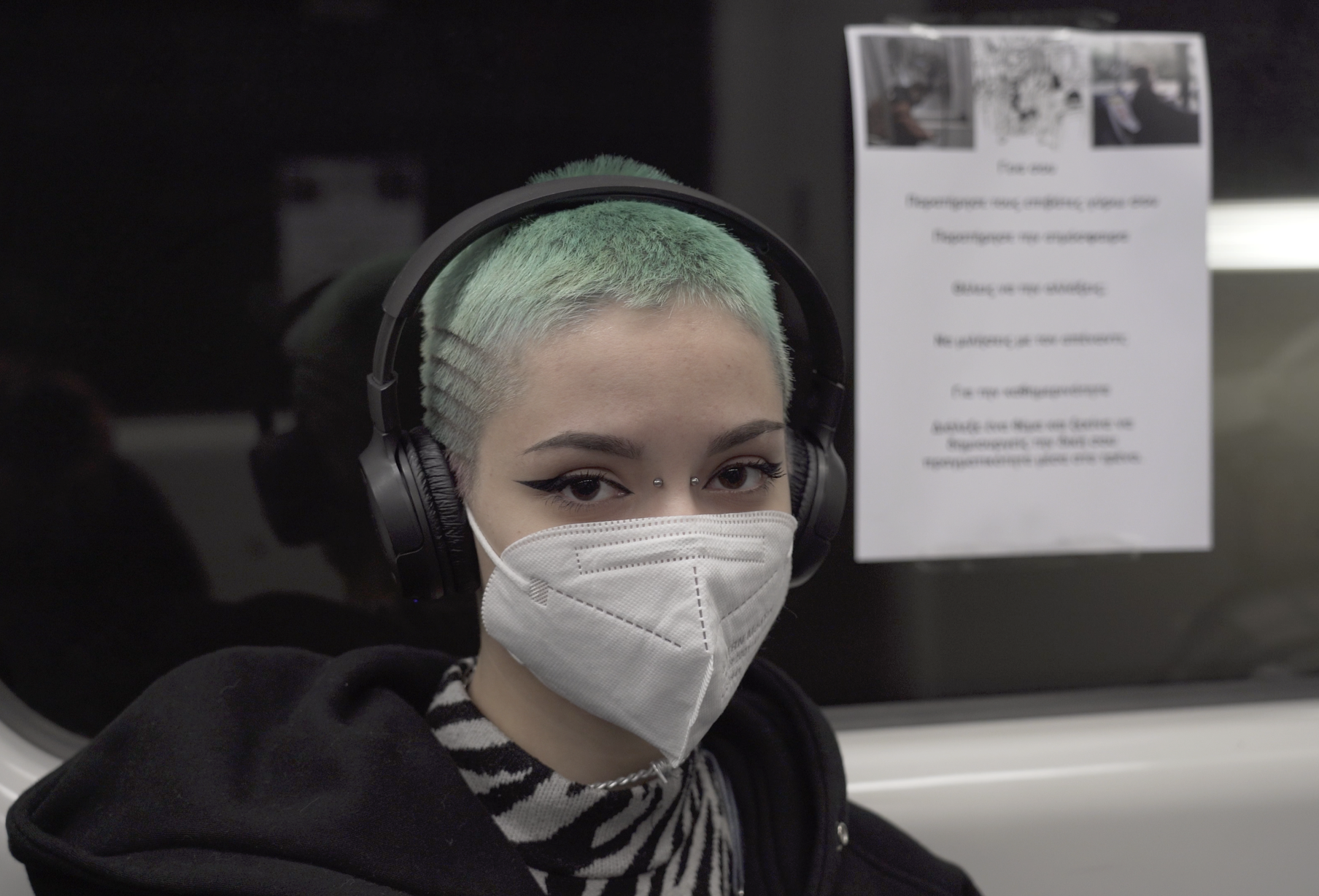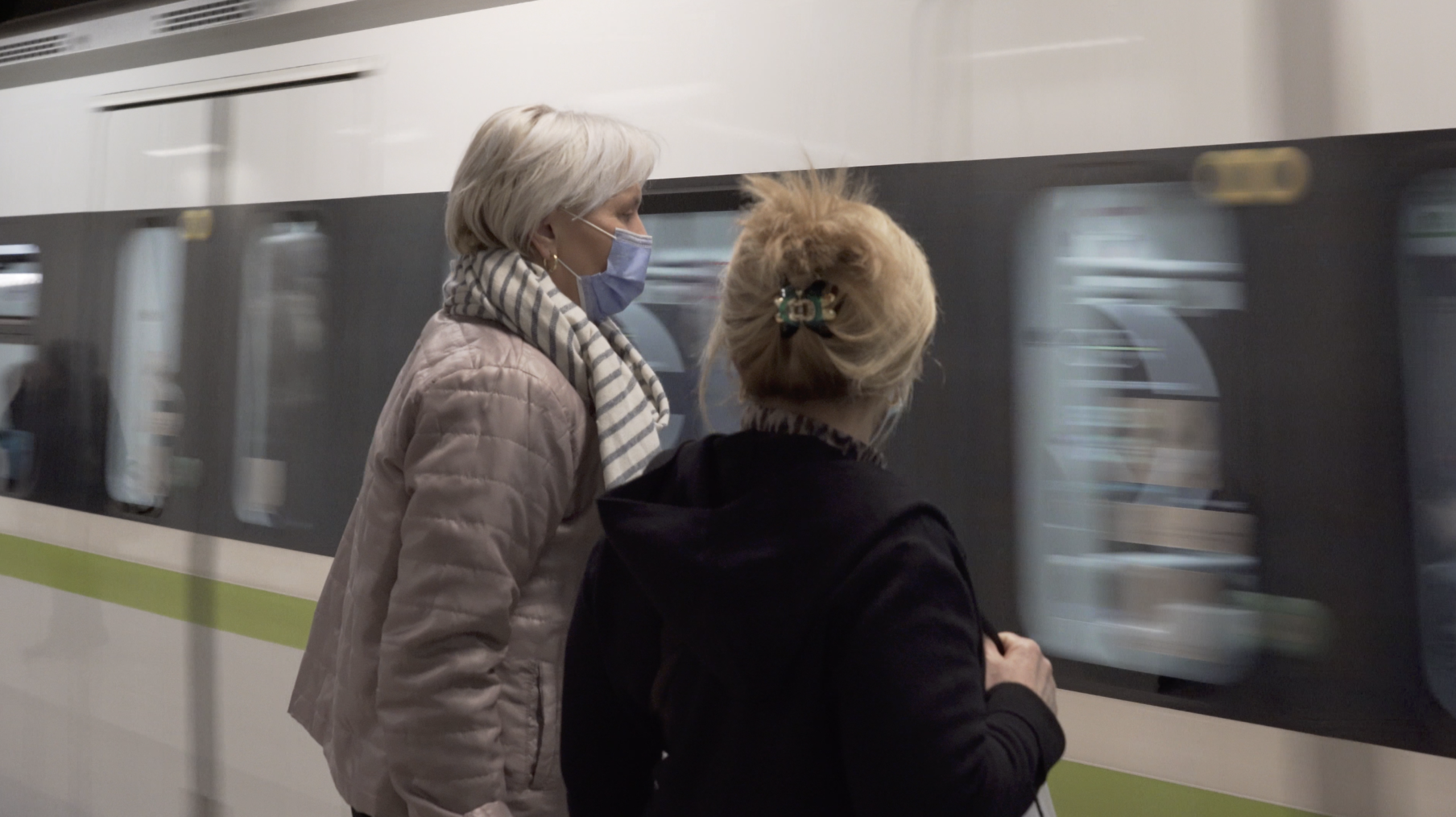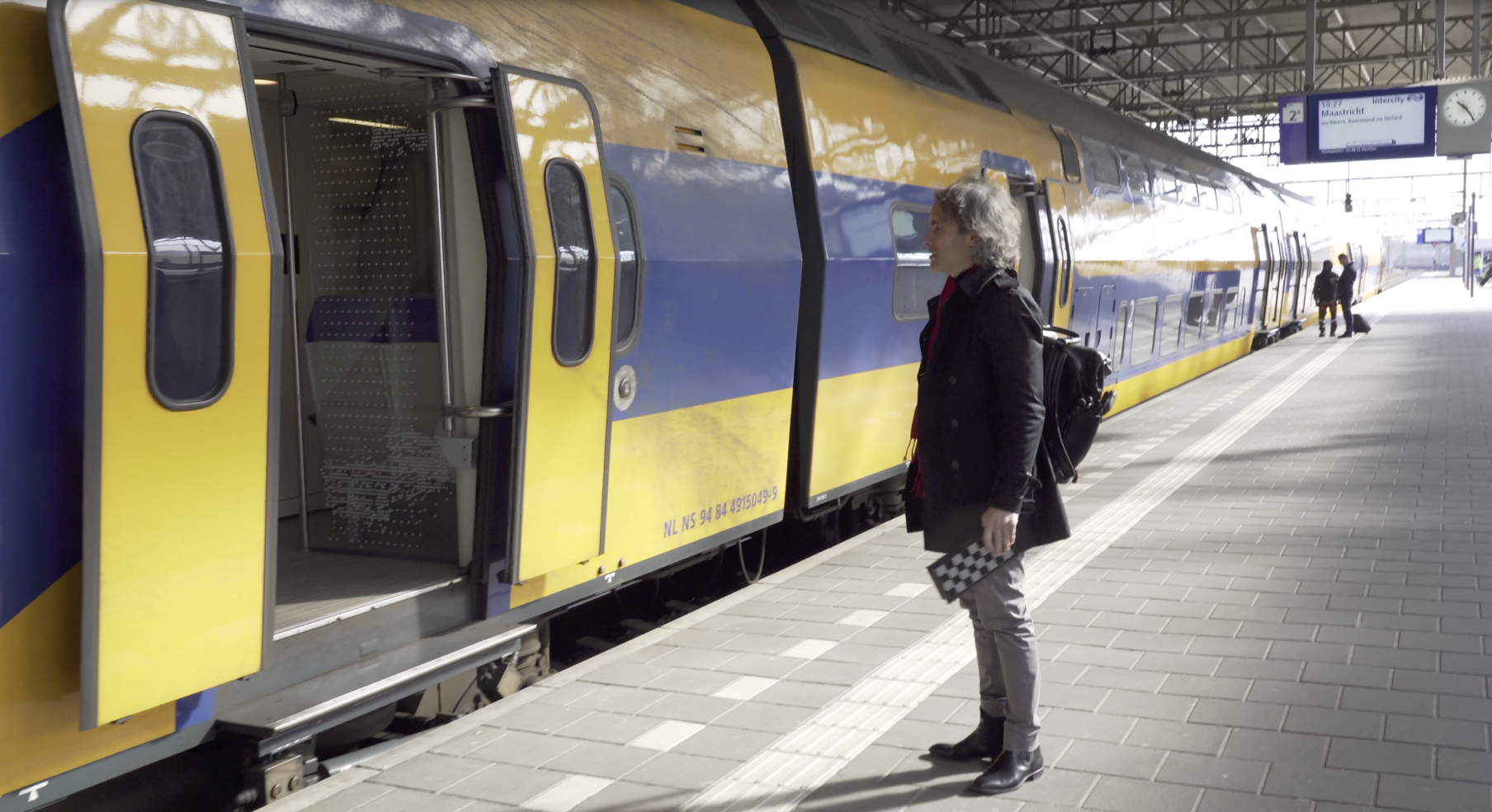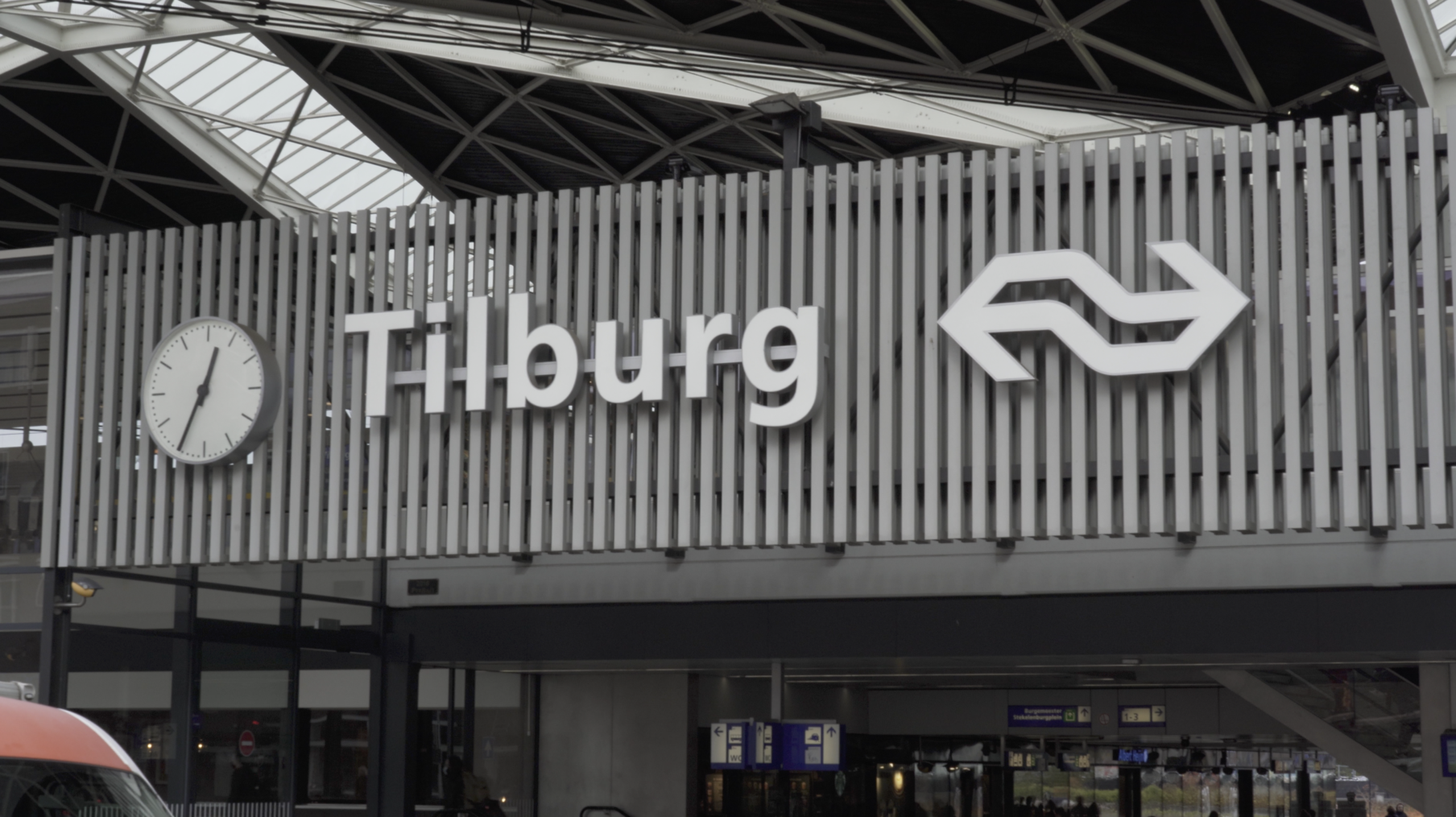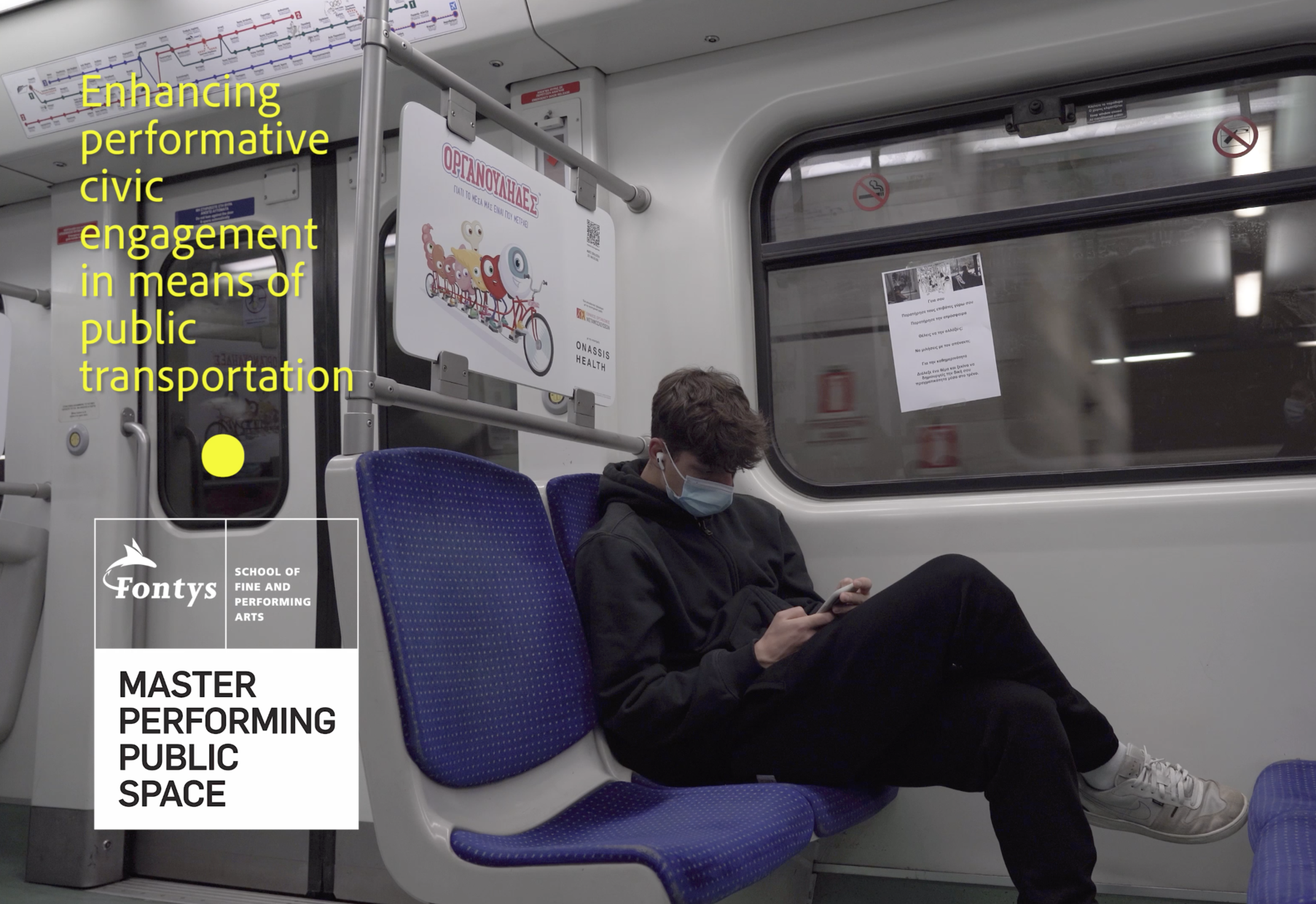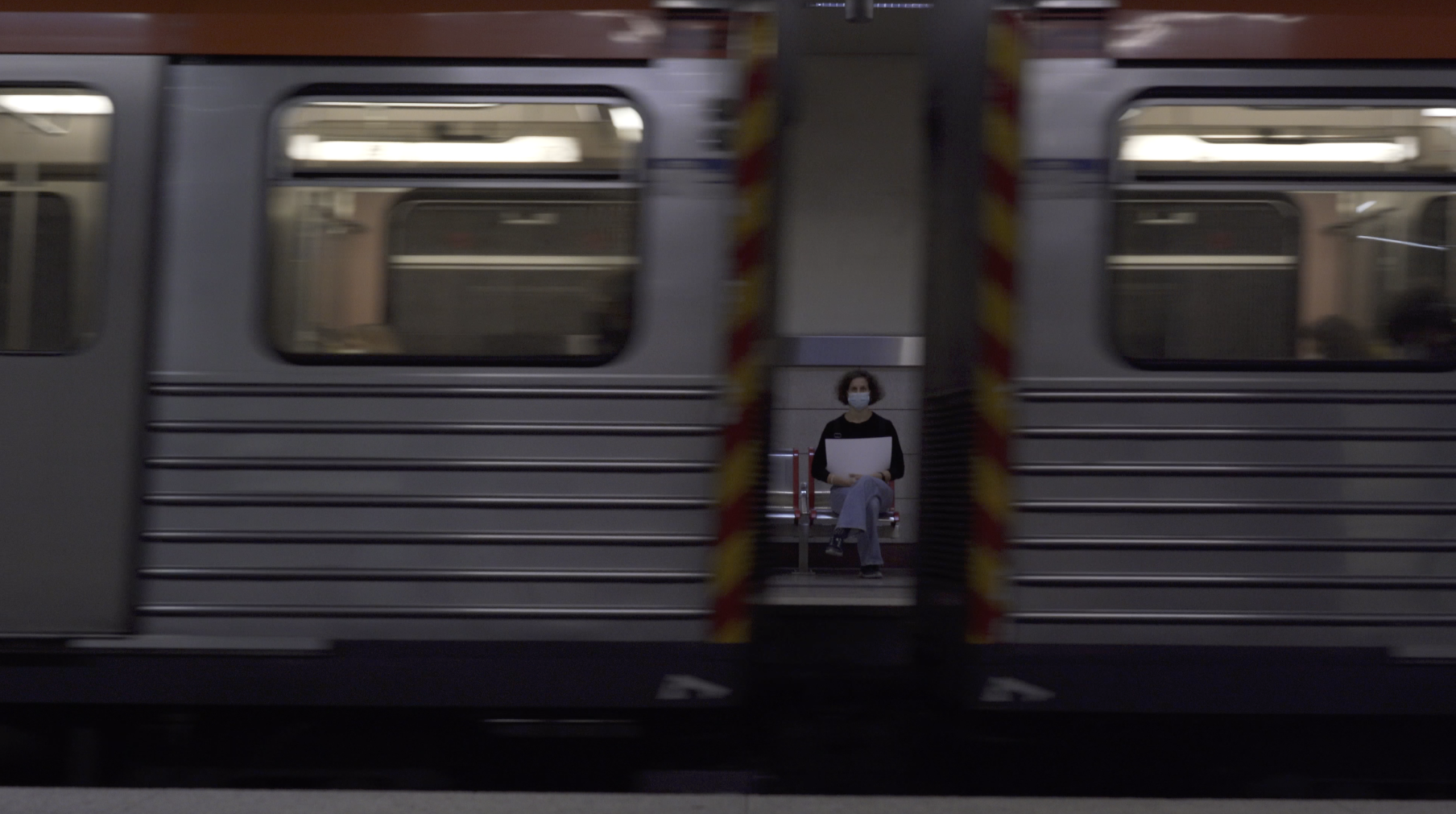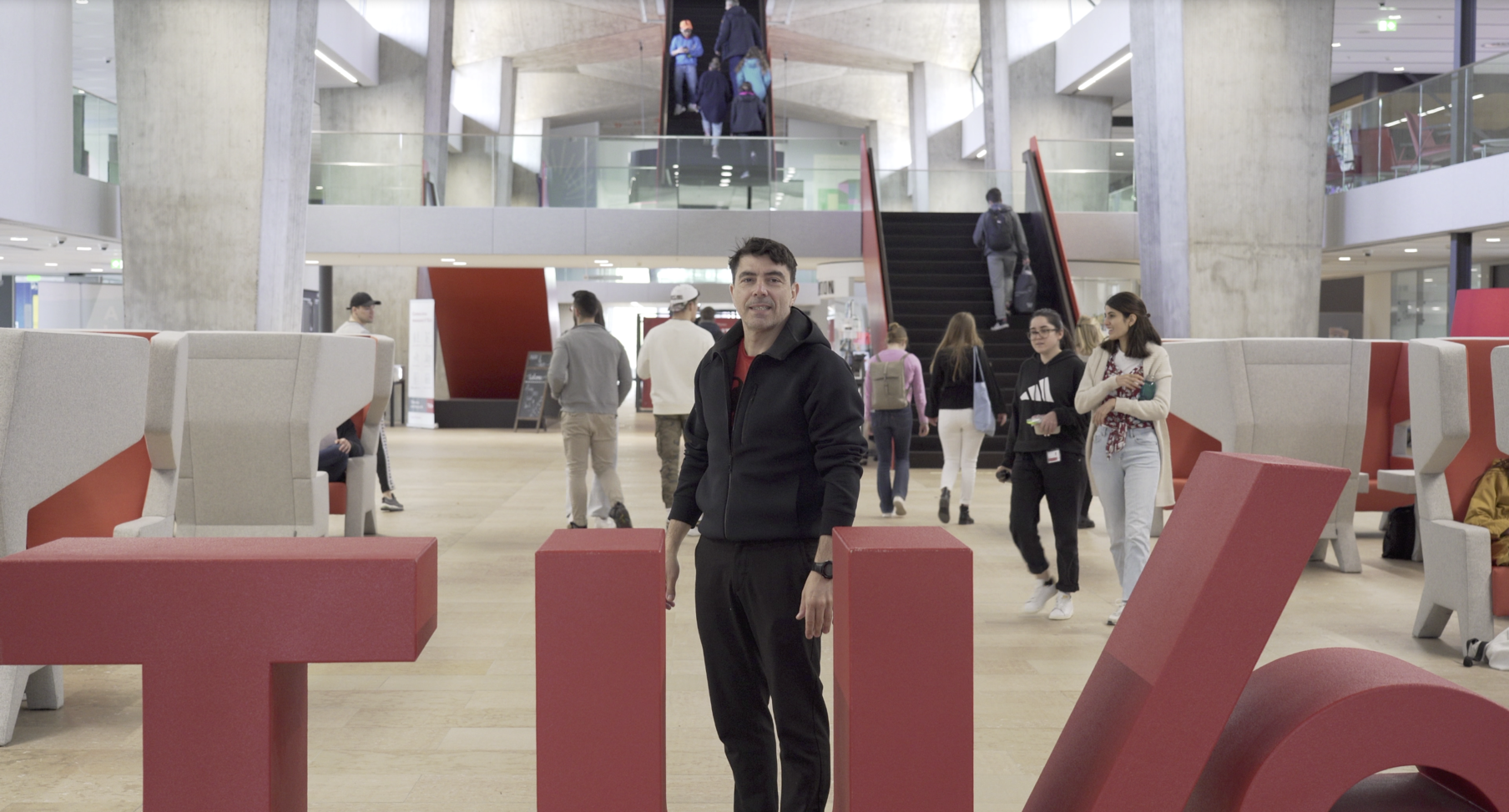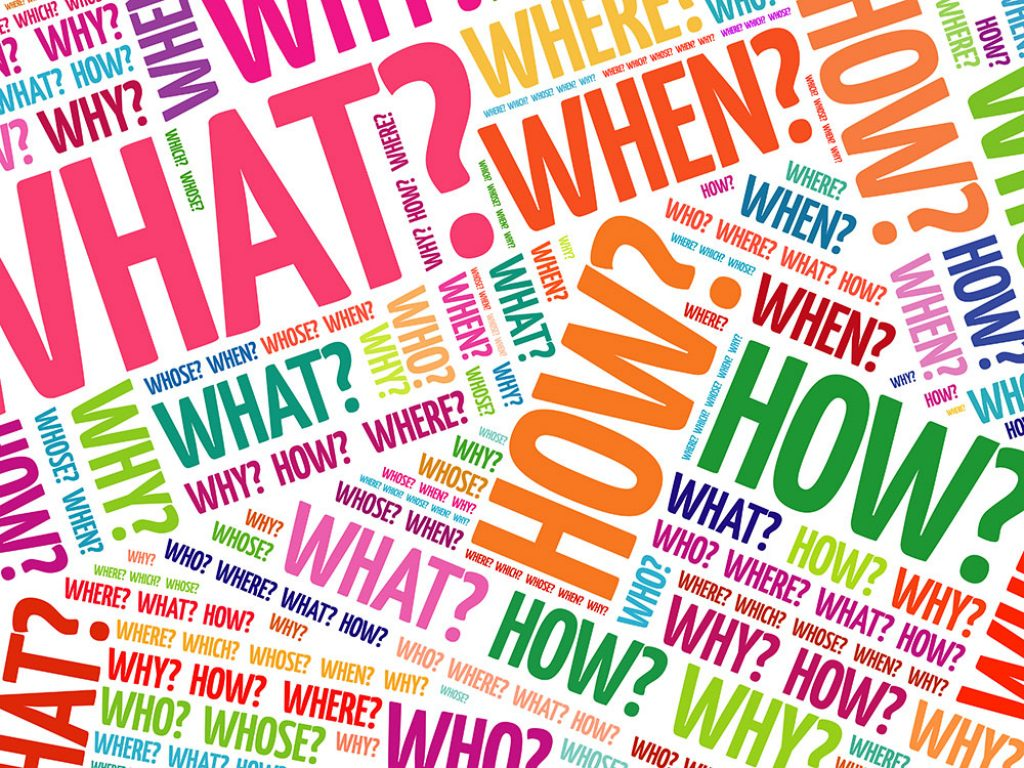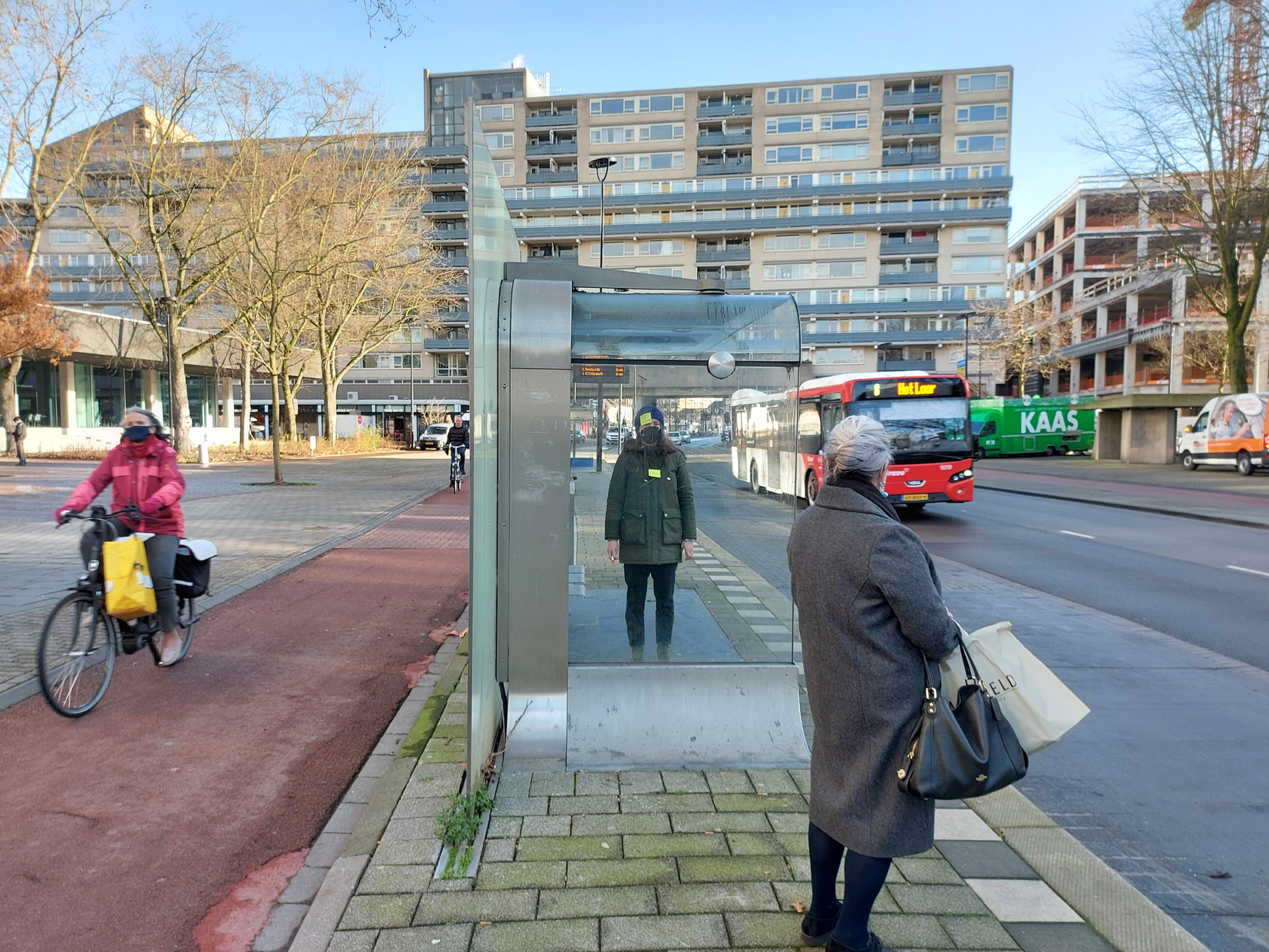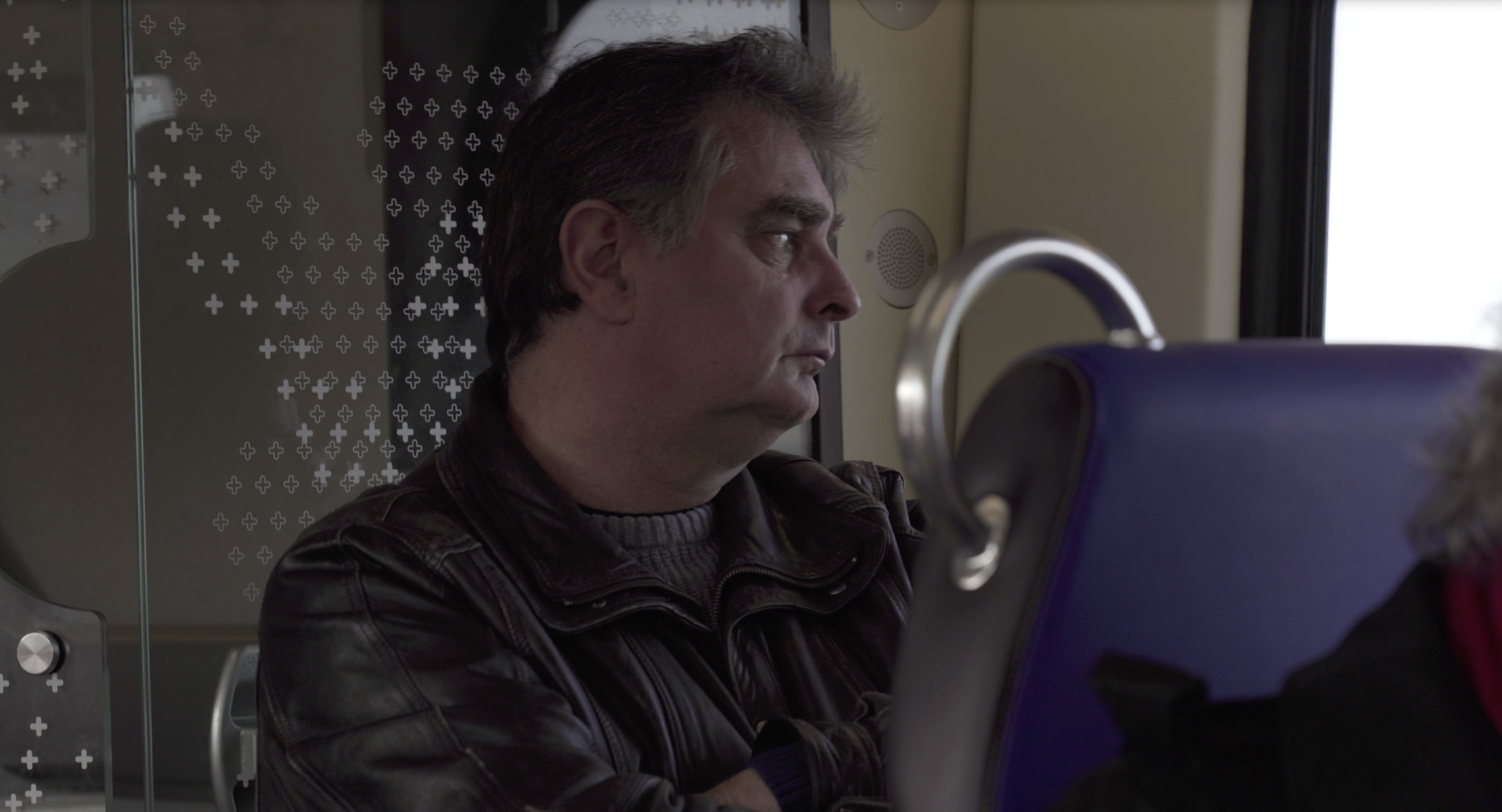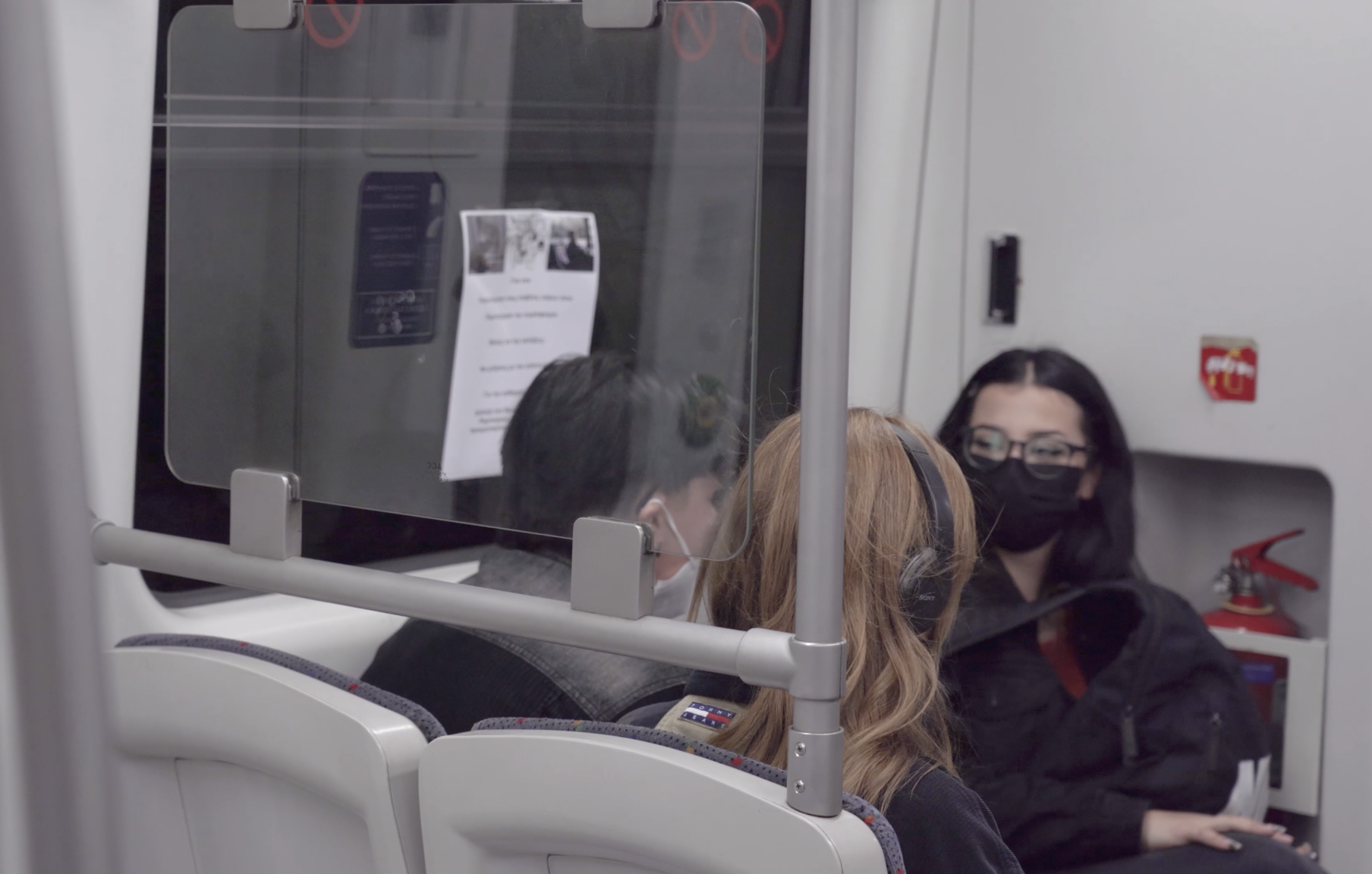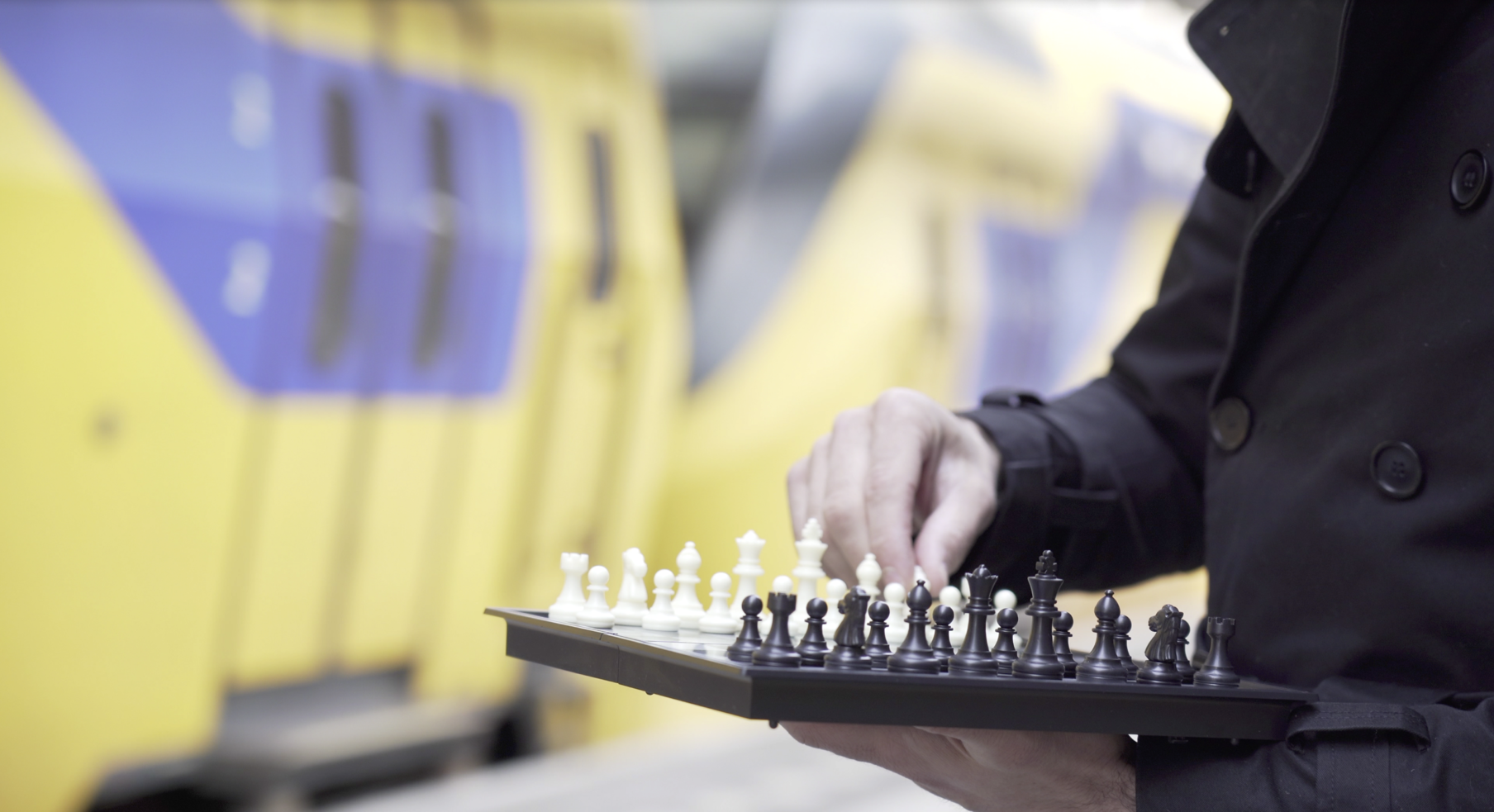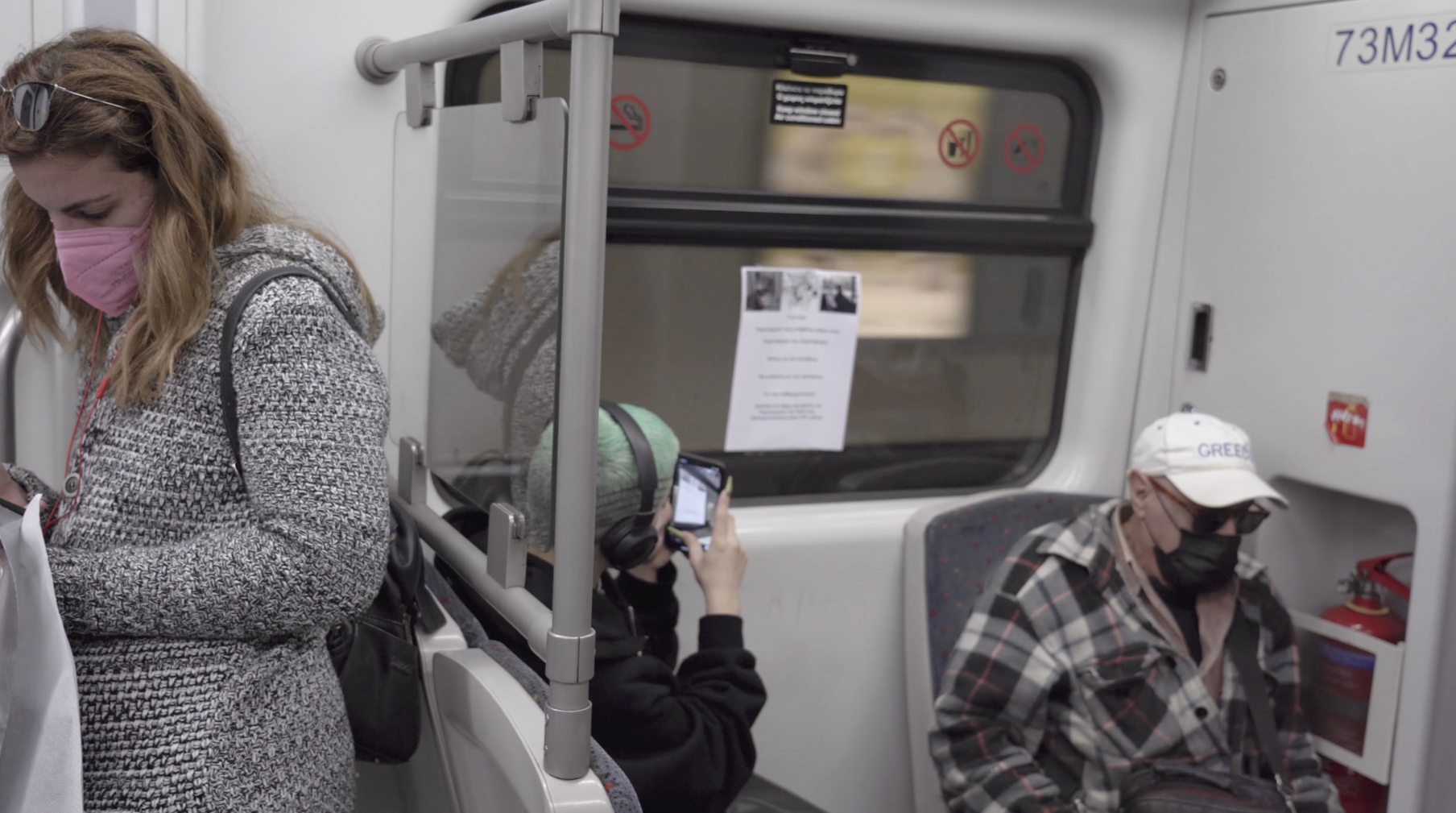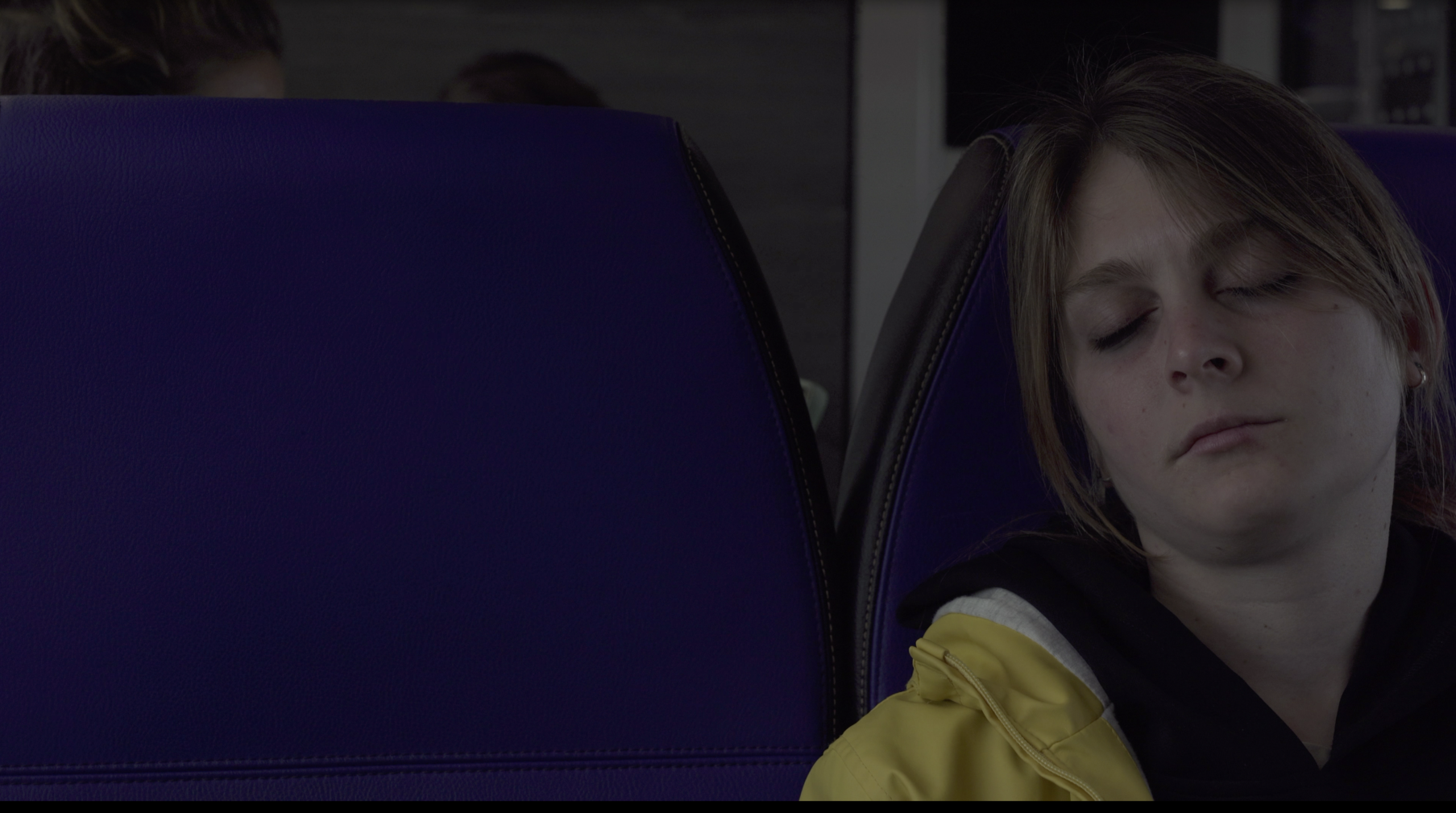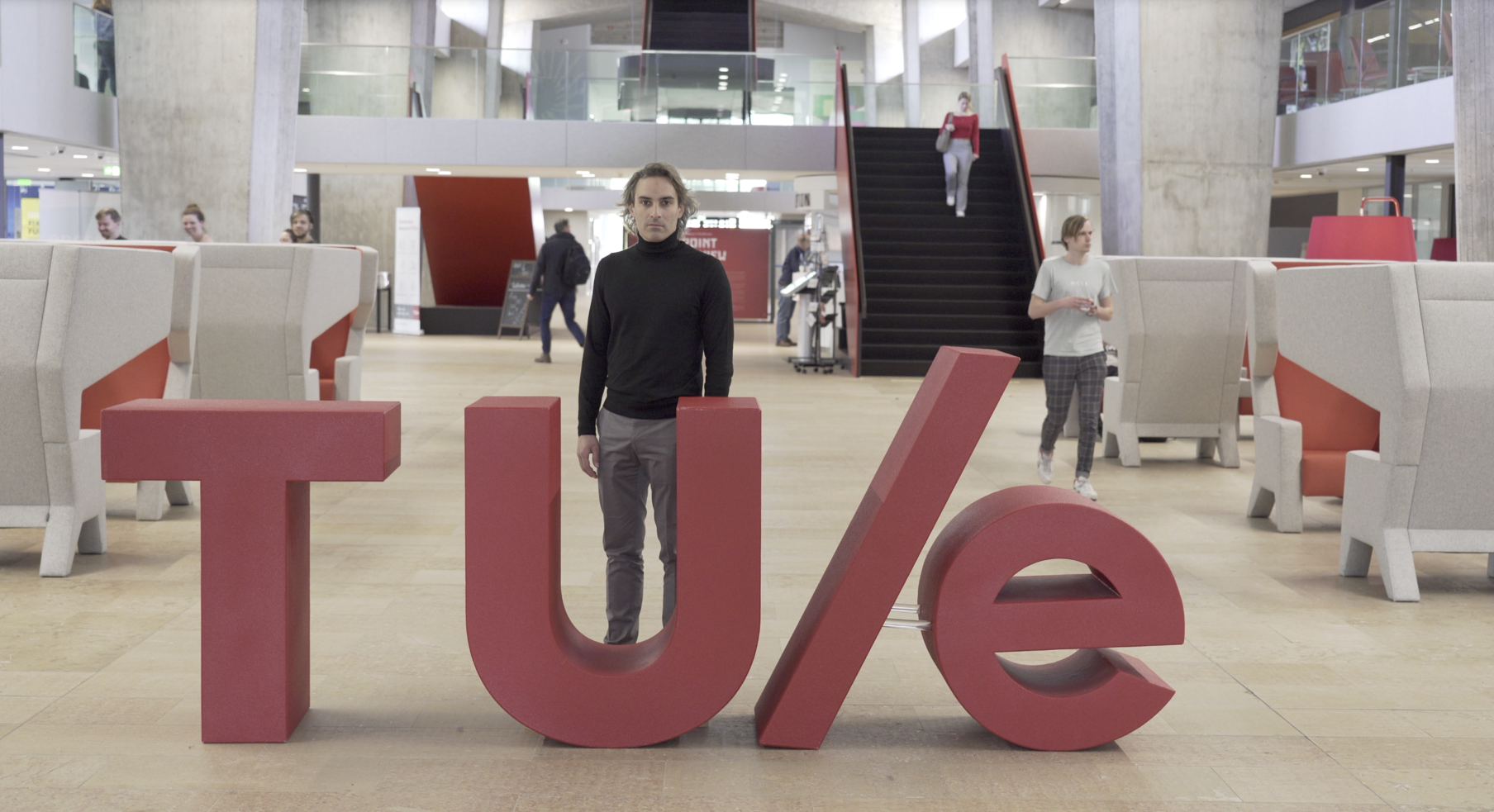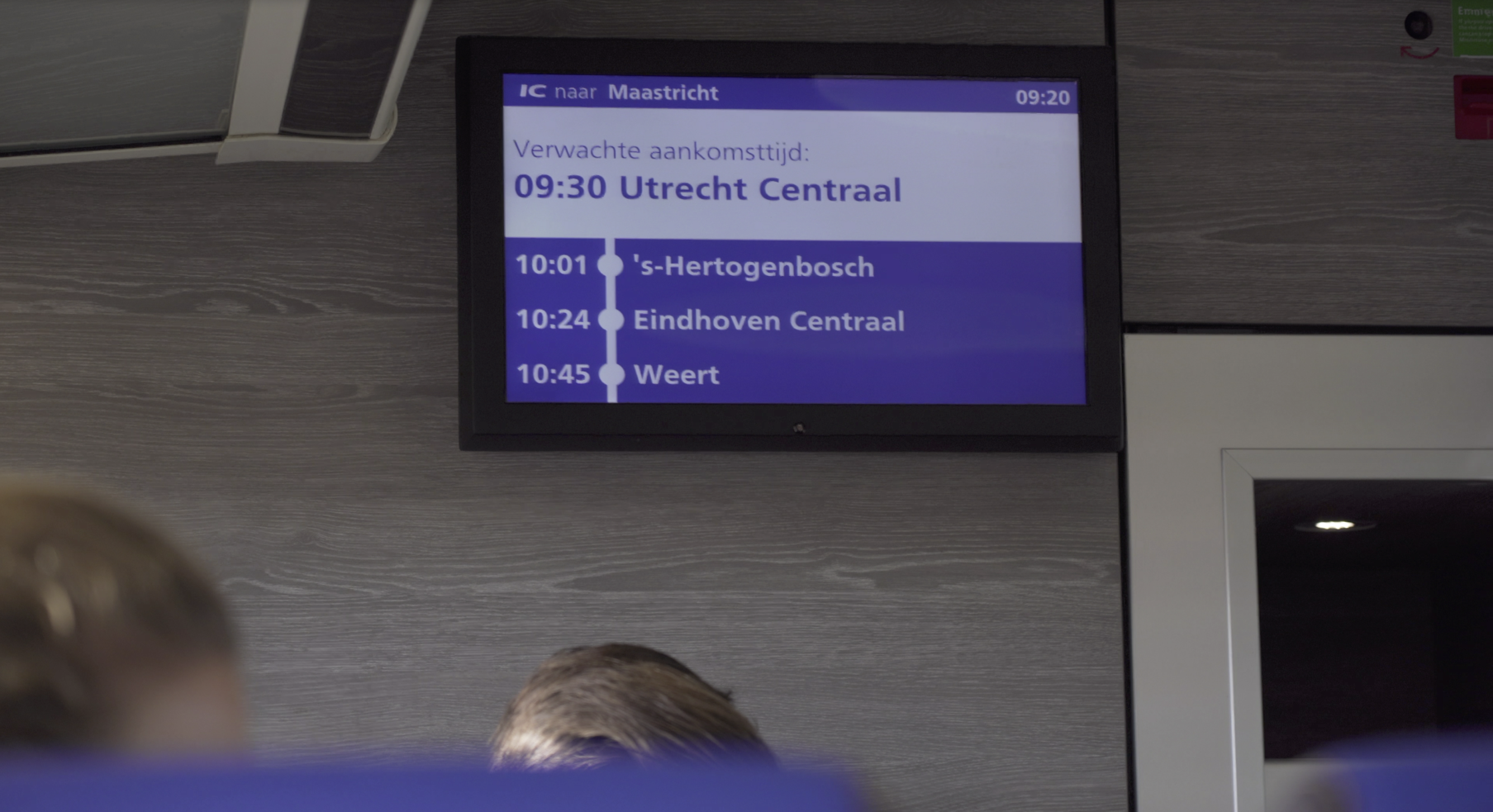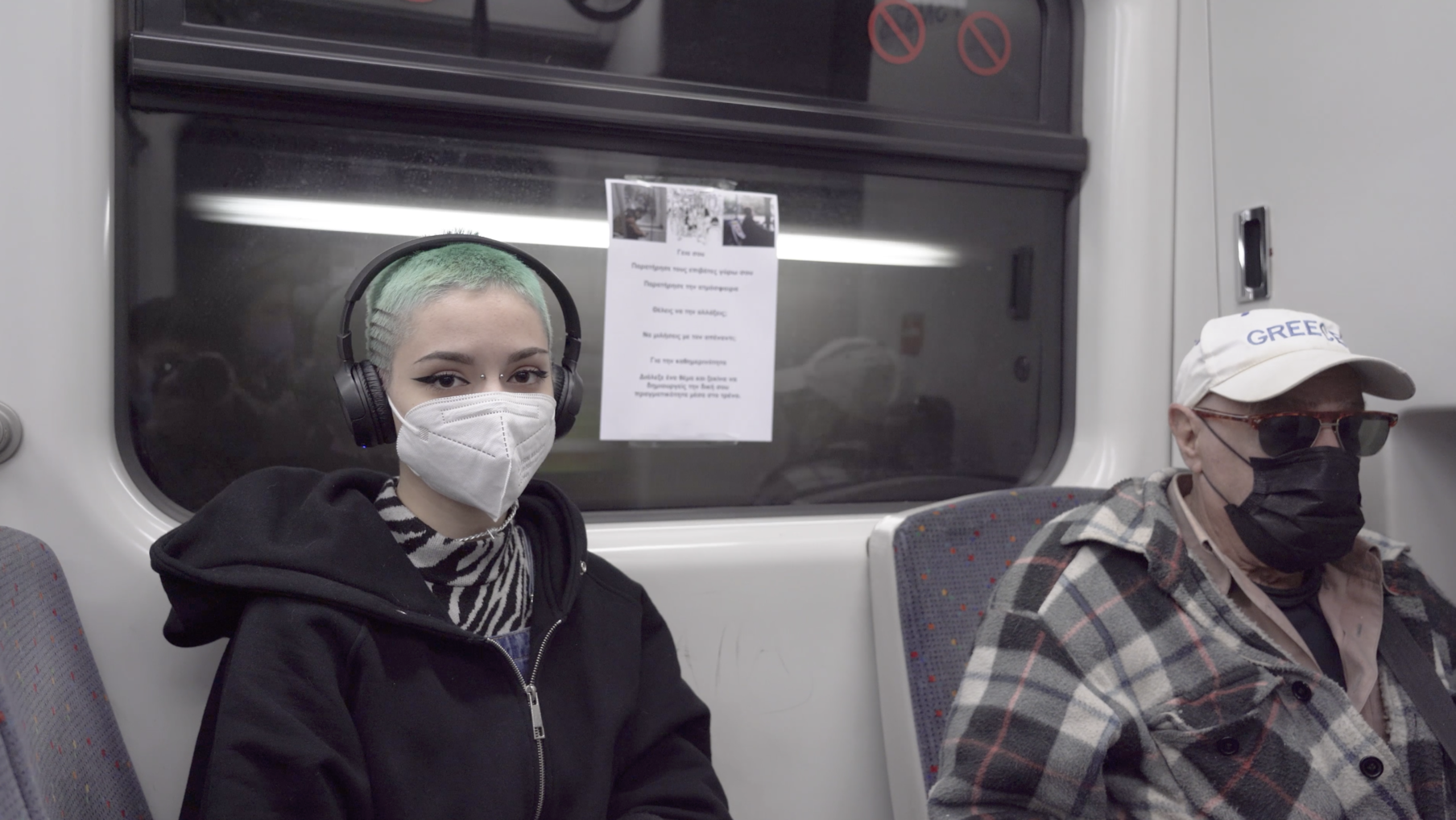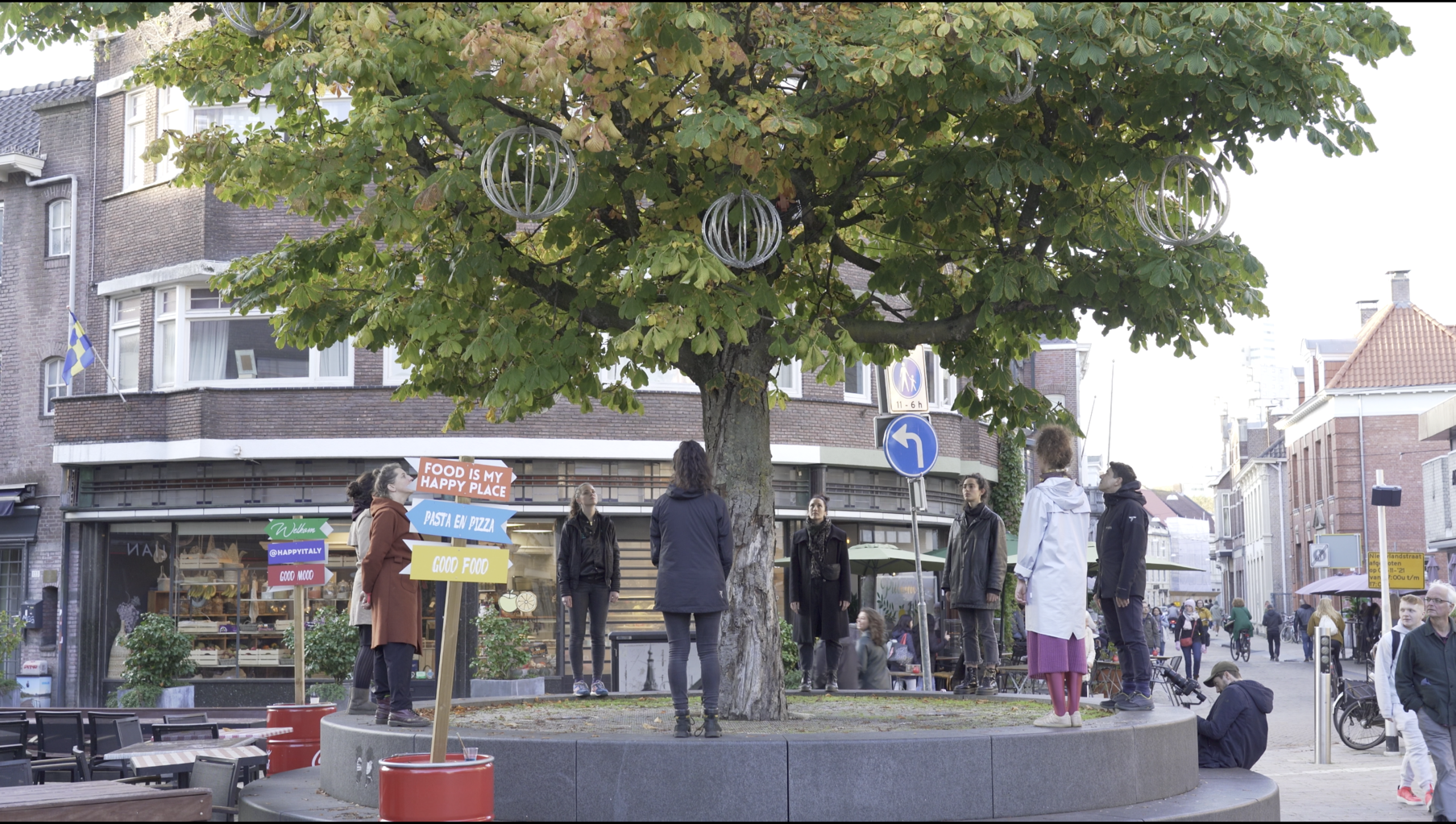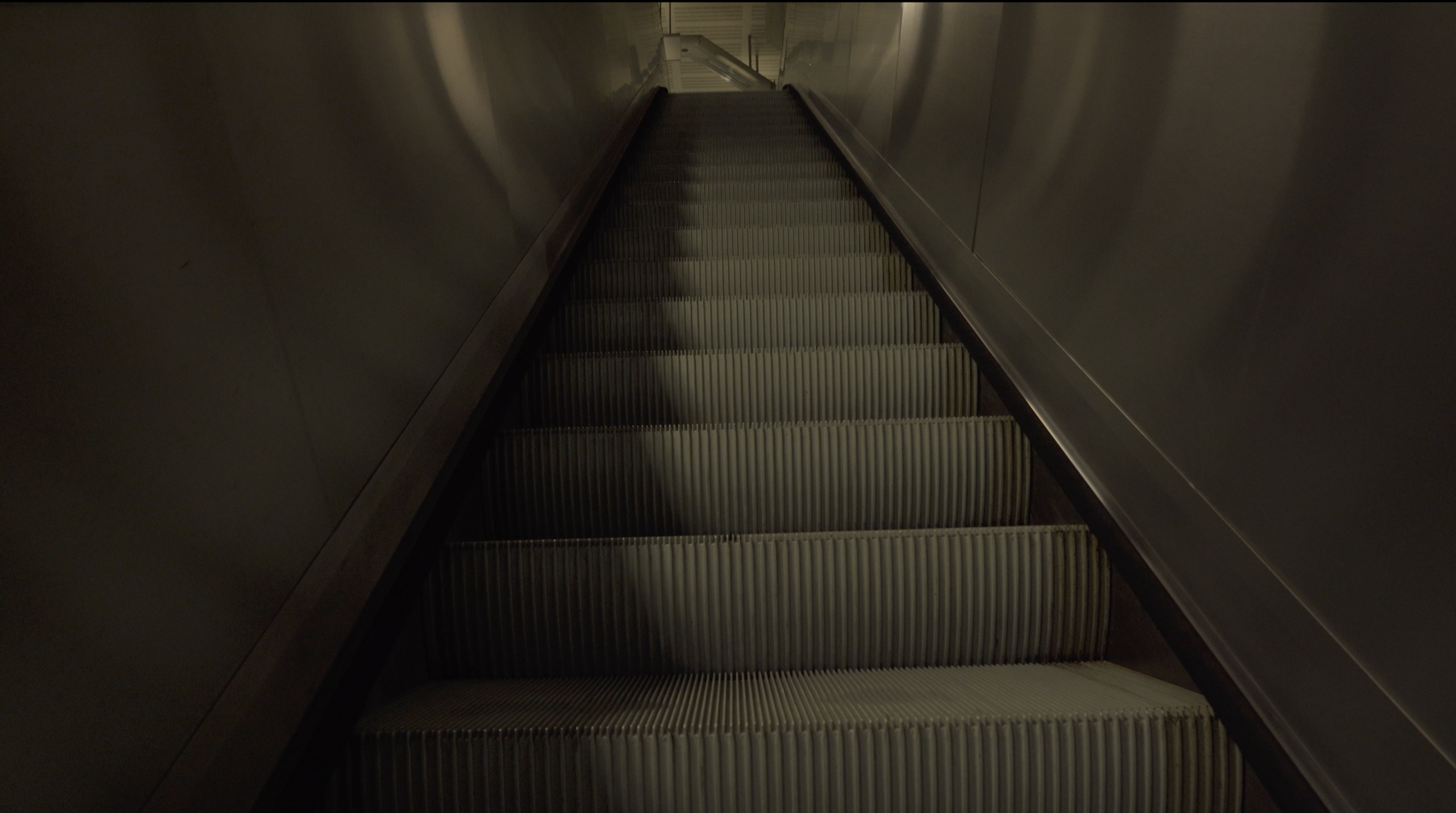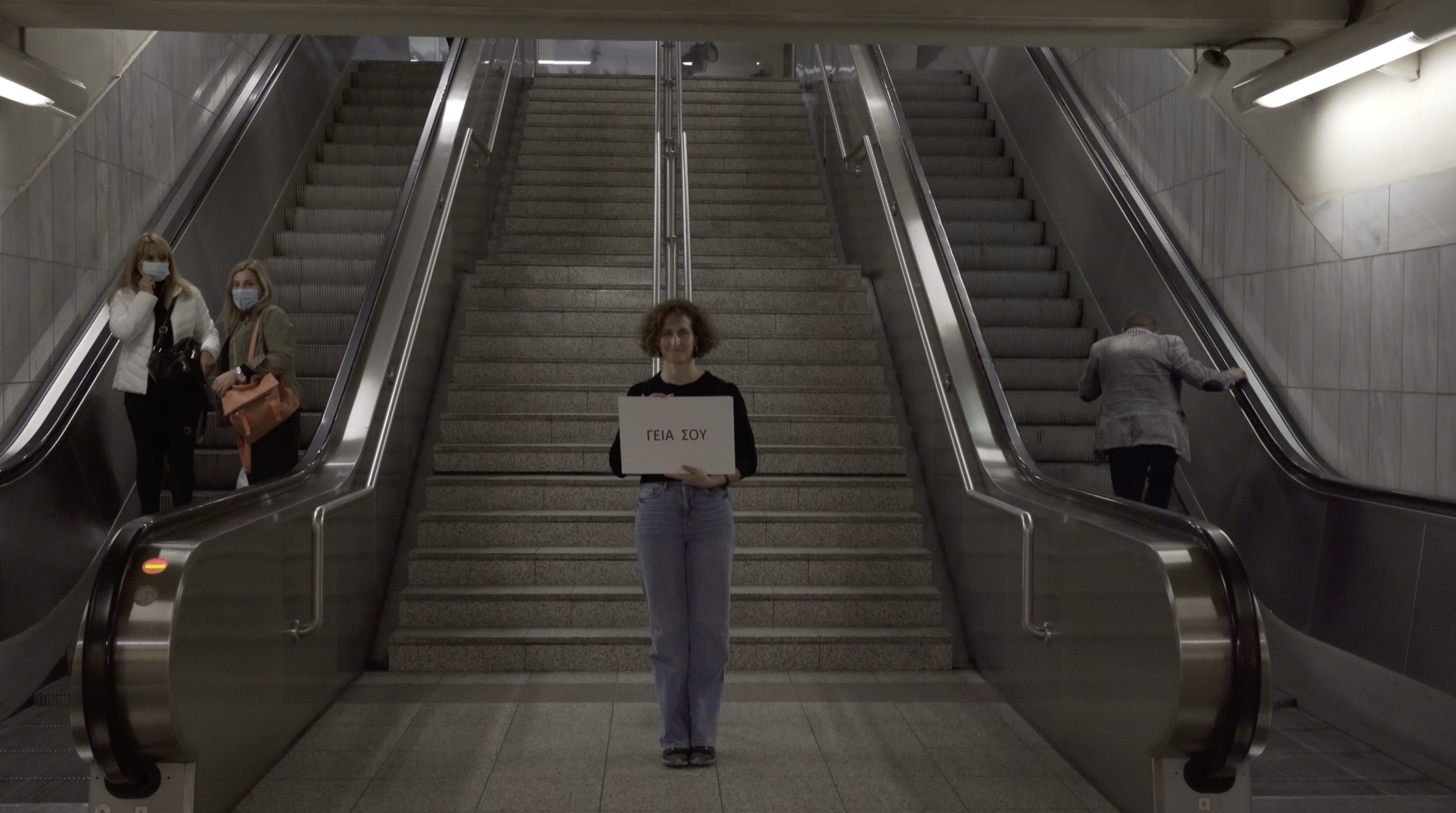[scroll down]
Through 2 workshops in Amsterdam and in Athens, we created a toolkit with artistic games and props, which all passengers can use in order to interact with others in public transport. My aim is to empower citizens to transform the non-place (Augé, 1995) in means of public transportation into performance space/time and, subsequently, social space/time (Lefebvre, 1991) through a creative form of civic encounter.
Public transport is not only a public utility and a means of accessing other public places; it is also itself a mobile public space (Paget-Seekins & Tironi, 2016). Using public transport is an outdoor "necessary activity," which is more or less compulsory, such as going to work or waiting for a bus, where people are in passive contact with each other -they only see and hear other people- and only minimum activity takes place (Ghel, J. 2011, p. 9-13)
[scroll down]
The social character of art is summed up in the dependence of the value of an artwork on the extent to which it helps us to respond to our daily needs in the best possible way. The philosophers Claude Saint-Simon and Auguste Comte rejected the belief that art is an end in itself and acknowledged that the value of art lies in whether it contributes to the realization of a vision for a future society without violence and class exploitation (Beardsley, 1989 p. 287). I believe that the idea of art as an end in itself may result in shallow aestheticism that ignores the problems of the real world rendering art into a pastime for the leisure classes. In my view, it is perfectly legitimate for a work of art to convey, apart from an aesthetic perception of the world around us, messages that will urge citizens to transform their living conditions for the better.
Reflecting on my position as an artist and researcher in the project, and in close reference to Stern & Seifert’s (ibid) perspective, I perceive myself as a provocateur of dialogue who, through artistic tactics, methods and experiments, incites passengers into interactions, detaching them from their daily routine commuting to or from work and defamiliarizing them from the typical transit space of a public transport vehicle. I perceive the performance artist as an aesthetic provocateur and a facilitator of collective creative experience in public space and a catalyst for dialogue and communication. I employ collaborative performance art in order to transform public transport into a new area of conviviality, a social space that, however ephemeral it may be, has the potential for a lingering impact on citizens
[scroll down]
These interventions encompass and express the main aesthetic principles of my artistic practice in the context of my research project: simplicity and immediacy; symbolism; relational aesthetics; and experiential corporeal engagement.
First of all, the participants stage the interventions in a short time by using simple, everyday means and tools, without being consumed in artistic embellishment, so as to effectively engage passengers in co-creating a communal and communicative creative social space. The techniques, practices and tools employed are co-created in the collective and democratic spatiality/temporality of the workshops and imply a subversion of traditional art forms from which citizens often feel excluded, which results in their viewing art and the institutions that serve it as a fenced-in realm where only the culturally initiated can enter (Bourdieu, 1984, p. 26). This project can be viewed as socially engaged performance art that aims at engaging, empowering and emancipating citizens artistically and socially.
Secondly, the props employed act as symbols for concepts I hope to have expressed. We chose simple, mundane objects that allude to everyday life that would create an atmosphere of familiarity and would make it easy for passengers to relate to them and use them. At the same time, through each prop, the performative interventions were linked to socio-political concepts and issues such as: citizens’ freedoms, justice, democracy, racism, etc. In this way, I intended to engage passengers in empathy and criticism, inviting them to a seemingly innocent game that can be turned into a socio-political debate. By selecting a prop from the toolkit, a passenger was invited to start a discussion with another passenger, guided by instructions that accompany the toolkit. For example, the protective suit hides bodily features and, in this way, the intervention triggers discussions about gender. In addition, during the pandemic, the protective suit was associated with the fear of Covid-19. The mirror symbolically challenges passengers to think and act from the position of the Other. It reminds us that the Other can act as a mirror of our behaviours and to realize, to a certain extent, that what we give comes back to us. By trying to guess the other person's life by writing information about them on post-it notes using words, numbers and dates, a citizen is transformed from one out of a number of passengers onboard a public transport vehicle into a person worth-noticing, a personality. The different portraits on the cards comment on the tendency we have to form an opinion about someone based on their appearance and colour. This experiment can trigger discussions about racism and stereotypes.
info: www.ioanniskarounis.com
[scroll down]
PHOTOS AND VIDEO FOOTAGE
I dedicated a significant amount of time to editing and evaluating the photographic and video material that I had to pick out for my research. This process allowed me to carefully review and select the most relevant and informative material to include in my final presentation.
As I worked through this process, I also had the opportunity to re-engage with the participants and passers-by who were involved in the experiments. Revisiting the photos and videos,
with their unique personalities and characteristics, which allowed me to analyze their behaviors and responses more accurately and thoughtfully.
Overall, this editing and evaluation process was a critical step in ensuring the quality and accuracy of my research presentation.
It allowed me to carefully select the most impactful material while also deepening my understanding of the participants and the experimental results.
I worked with great pleasure in this research as: filmmaker, video editor, photographer, performer, and facilitator of the workshops.
Ioannis Karounis
(PDF) Table of Contents
Theoretical Reflection
Personal Reflection
Artistic Reflection
Links and E-mails with stakeholders
Video documentation – Web Links
[scroll down]
Bibliographical and Artistic References
Augé, M. (1995), Non-places: introduction to an anthropology of supermodernity, London & New York, Verso.
Beauchet, O., Bastien, T., Mittelman, M., Hayashi, Y., Hau Yan Ho, A. (2020),"Participatory art-based activity, community-dwelling older adults and changes in health condition: Results from a pre-post intervention, single-arm, prospective and longitudinal study," Maturitas, 2020, April, 134, pp.8-14, doi: 10.1016/j.maturitas.2020.01.006. Epub 2020 Jan 13. PMID: 32143777.
Bourdieu, P. (1984), The Field of Cultural Production: Essays on Art and Literature, Columbia University Press.
Bourriaud, N. (2002), Relational Aesthetics, Paris, Les Presses Du Réel.
Davies J. (2019), "Travelling Through Liminal Non-places: Gozi-tan Buses as a Non-Place for Socializing," Malta, 2019, Omertaa, Journal for applied anthropology, https://www.omertaa.org/archive/ omertaa0083.pdf, accessed 12/3/2022.
Emmons, R.A., & Diener, Ed (1986), "Influence of Impulsivity and Sociability on Subjective Well-Being," Journal or Personality and Social Psychology, 50 (6), pp. 1211-1215, as quoted in Thomas, J. A. P. K., idem.
Ghel, J. (2011), Life Between Buildings: Using Public Space, Washington / London, Island Press.
Habermas, J. (1972), Knowledge and Human Interests, Boston, Beacon Press.
Ianchenko, A. (2020), "A Tram Ride You Would Talk About," The Journal of Public Space, 5(4), pp. 273-282.
Jagodzinski, J. (2021), "The Non-art of Tehching Hsieh: Art as Life/Life as Art," pp. 361-377, in de Assis, P. & Giudici, P. (eds.), Machinic Assemblages of Desire: Deleuze and Artistic Research 3, Leuven, Leuven University Press.
Lefebvre, H. (1991), The production of space, Cambridge, MA, Blackwell.
Lloyd, J. (2003), "Airport Technology, Travel, and Consumption," Space and Culture 6(2), pp. 93-109, as quoted in Davies J., idem.
Paget-Seekins, L. and Tironi, M. (2016), "The publicness of public transport: The changing nature of public transport in Latin American cities," Transport Policy 49, pp. 176-183.
Putnam, R. (2000), Bowling Alone: The Collapse and Revival of American Community, Simon and Schuster, New York.
Stern, M.J. & Seifert, S.C. (2009), "Civic Engagement and the Arts: Issues of Conceptualization and Measurement", Civic Engagement and the Arts-2008-2009, 1, https://repository.upenn.edu/siap_civic_engagement/1, accessed 08-04-2022.
Thomas, J. A. P. K. (2009), "The social environment of public transport," A thesis submitted to the Victoria University of Wellington in fulfilment of the requirements for the degree of Doctor of Philosophy in Psychology, Victoria University of Wellington, https://core.ac.uk/download/pdf/41336442.pdf, accessed 01-03-2022.
Tisdall, C. (1974), Art into Society, Society into Art: Seven German Artists, London, Institute of Contemporary Arts.
Tuvikene, T., Kębłowski, W., Weicker, T., Finch, J., Sgibnev, W., Sträuli, L., Ianchenko, A. [PUTSPACE project team] (2021), "Public transport as public space in European cities" (Forum IfL, 39), Leipzig: Leibniz-Institut für Länderkunde e.V. (IfL).
https://www.ssoar.info/ssoar/bitstream/handle/document/72914/ssoar-2021-tuvikene_et_al-Public_transport_as_public_space.pdf?sequence=1&isAllowed=y&lnkname=ssoar-2021-tuvikene_et_al-Public_transport_as_public_space.pdf, accessed 01-04-2022.
Ventzislavov, R. (2020), "The Aesthetics of Performance Art: An Annotated Reading List," The American Society for Aesthetics: Diversity Curricula, Society of Architectural Historians,
https://www.sah.org/jobs-and-careers/opportunities/recent-opportunities/2020/08/27/default-calendar/the-american-society-for-aesthetics-diversity-curricula, accessed 02-03-2021.
Westerman, J. (2016), "The Dimensions of Performance," Performance at Tate: Into the Space of Art, Tate Research Publication, https://www.tate.org.uk/research/publications/performance-at-tate/dimensions-of-performance, accessed 08/02/2022.
How can citizens perceive everyday life – including executing “daily routines and tasks”– as performance?
How can the temporality and spatiality of public transit be transformed from waiting time and space into co-created communicative time and space?
CITE [scroll down]
Karounis, Ι. (2022), Enhancing performative civic engagement in means of public transportation, Master’s thesis, Performing Public Space, Research Catalogue, FONTYS University, Amsterdam, The Netherlands, https://www.researchcatalogue.net/view/1896676/1896677
[scroll down]
By selecting a prop from the toolkit, a passenger is invited to start a discussion with another passenger, guided by instructions that accompany the toolkit set.
Each experiment is linked to socio-political concepts and issues that concern a large percentage of citizens (such as: citizens' freedoms, justice, democracy, war, racism, etc.) With the interventions staged in means of public transport passengers are given the opportunity to start a discussion on these issues.
Reflecting on my position as an artist and researcher in the project, and in close reference to Stern & Seifert’s (2009) perspective, I perceive myself as a provocateur of dialogue who, through artistic tactics, methods and experiments, incites passengers into interactions, detaching them from their daily routine commuting to or from work and defamiliarizing them from the typical transit space of a public transport vehicle. I perceive the performance artist as an aesthetic provocateur and a facilitator of collective creative experience in public space and a catalyst for dialogue and communication. I employ collaborative performance art in order to transform public transport into a new area of conviviality, a social space that, however ephemeral it may be, has the potential for a lingering impact on citizens.
In my artistic projects, the process of creation starts from the architecture of the body and the wide repertoire of its dynamics. The dance education that I received has influenced me in my artistic practice and the way I develop my projects. I choose to investigate a given project through an experiential approach and understand time and space as lived temporality / spatiality. The performative interventions staged in the context of my project invite passengers to engage with their fellow citizens through a corporeal, experiential encounter. Corporeal interaction between people through sharing and collaboration is for me a key element in the assimilation of lived experience. The interventions in my project aim at the corporeal immersion of the participants in the social space created, and the collective sensory-bodily experiences produced intend to heighten awareness of the discursive, cognitive and affective aspects of the interventions. Collective corporeal experiences in performance acts contribute to meaning-making, authenticity, empowerment, and social as well as performative civic engagement in the broader contexts of the participants lives.
In my opinion, the social character of art is summed up in the dependence of the value of an artwork on the extent to which it helps us to respond to our daily needs in the best possible way. The philosophers Claude Saint-Simon and Auguste Comte rejected the belief that art is an end in itself and acknowledged that the value of art lies in whether it contributes to the realization of a vision for a future society without violence and class exploitation (Beardsley, 1989 p. 287). I believe that the idea of art as an end in itself may result in shallow aestheticism that ignores the problems of the real world rendering art into a pastime for the leisure classes. In my view, it is perfectly legitimate for a work of art to convey, apart from an aesthetic perception of the world around us, messages that will urge citizens to transform their living conditions for the better.
Participant: Georgios Skantzaris - Lecturer | Docent
G. Skantzaris takes the Amsterdam-Eindhoven train every week.
Place of work: Centre for Analysis, Scientific Computing, and Applications (CASA) Department of Mathematics & Computer Science | Wiskunde & Informatica (W&I)
Ιn an effort to further develop my experiments, I decided to follow a citizen of Amsterdam in his daily commuting on public transport. Thus, I presented my project to George Skantzaris and he agreed to actively participate in my experiments. Through these experiments, I will have the opportunity to research in depth my research question and to gain valuable insights into the impact of the interventions on both the passengers and the participant.
[scroll down]
We developed and tested a toolkit of artistic devices that can be used by citizens to exercise creative citizenship and reposition themselves in public space as creators and co-creators of performative events. The toolkit also contains a manual for each one of the performative tools in it. These props will get citizens out of their daily routines and provoke their conscious engagement and performative dialogue with other citizens. My ambition for the research outcome is for the project to have an ongoing impact after the completion of the inquiry. I expect that these tools will be able to be further developed by citizens –they can intervene in the original ideas by adapting and modifying them according to their own needs and aesthetic criteria– and used in a range of public space settings as products of an artistic practice that can be passed on from one citizen to another. Therefore, this project proposes an art-based civic creativity pedagogy that can be applied in urban public space in order to enhance civic creative engagement, which can potentially develop into creative activism.
[scroll down]
Our experience with public transportation can differ significantly depending on the country we are in. In Greece, my research was conducted more comfortably and with fewer checks by transportation staff compared to the Netherlands, where I faced continuous checks by station managers.
This difference may reflect different approaches to passenger safety and supervision. In Greece, supervision may be more relaxed, allowing passengers to move around freely, while in the Netherlands, there is greater monitoring to ensure passenger safety.
Regarding public transportation, it is important to note that it is a public good or a public space, i.e., a good or a space provided by the public authority and financed by taxpayers. Different approaches to public transportation can affect the quality of life and the environment in a society. In Greece, the comfort of using public transportation may encourage citizens to use it more often, resulting in reduced pollution and traffic of private vehicles on the roads. In contrast, excessive supervision and continuous checks can make the use of public transportation more burdensome for passengers and discourage its use.
In any case, it is important to strike a balance between ensuring passenger safety and comfort and maintaining an efficient and affordable public transportation system. This requires careful planning, investment, and a commitment to improving public transportation infrastructure and services.
CONNECTIONS socio-political concepts
PERFORMATIVE INTERVENTIONS COLLABORATION
GAMES WORKSHOPS ATHENS AMSTERDAM
CO-CREATION
EXPERIMENTS FIRST PROTOTYPE
Case Study
Participant: Zafiria Tsirakaki
By trying to guess what another passenger’s life is likeby writing information about them on post-it notes using words, numbers and dates, a citizen is transformed from one out of a number of passengers onboard a public transport vehicle into a person worth-noticing, a personality.
[scroll down]
Concluding my research project, I am more aware of the importance of striking a balance between the two main aspects of my artistic practice. The first is the fulfillment of my artistic vision, and the second is the social relevance of the art I produce and the question of whether this art has social utility and awareness-generating capacity. Considering the various stages of this project and, at the same time, my development in reflection and critical thinking, I can say that the design process and the result of my artistic research work is very close to my idea of a participatory performance art practice that empowers and raises civic awareness putting aesthetics at the service of the social without compromising the artistic character of the work.
Since the beginning of the project, my artistic vision has shifted along with my research questions – which became more specific and more effective in addressing the research topic I have been inquiring into. My original research question interrogated the boundaries between the performer and the spectator, pointing to the potential of a performance act to enable the spectator to become a performer temporarily. Gradually, the focus of my research shifted from the dichotomy between the performer and the spectator to raising citizens’ artistic and social awareness through creative civic engagement and empowerment, thus seeking to do away with the distinction and the distance between “performer” and “spectator” altogether.
Apart from the research focus, what changed in the process of my research were the specification of the locus of the research, that is, the public space of public transportation as a potential social space of creative civic experience and engagement (Stern & Seifert, 2009), and the methodological choice of participant observation and the workshops, which proved to be very useful for the design of the performative interventions staged and tested in the project.
In the workshops that I conducted in Athens and in Amsterdam, I presented my idea and the theme of my project to the participants inviting them to co-design and co-develop performative interventions and artistic tools. The workshops were attended by artists and non-artists who were trained to intervene in public transport employing performance art-led techniques.
Conceptually, performance art, in general, democratizes the conditions of aesthetic creation and appreciation by raising new issues of ontology, meaning, and taste. Aesthetically, it expands the parameters of artistic expression by opening the door for new applications of the corporeal and the affective in art (Ventzislavov, 2020). With my project, I have attempted to expand the boundaries of democratic, corporeal and affective artistic creation by actively involving a number of participants in the project who, in turn, would actively engage a number of passengers in a series of performative interventions.
Video Documentation: Flash cards - Maria Pisiou - Metro Amsterdan, line Μ54 (Station Amsterdam Bijlmer Arena)
[scroll down]
After each experiment, the people who staged the interventions interviewed the passengers who had interacted with them, collecting the views, feelings and behaviours of citizens in public transport. The people who staged the experiments were also interviewed by me. These interviews were videographically documented and informed me in depth about the results of the performative experiments, allowing me to have an overview of the feelings and the insights of the participants in the workshops, and giving me direct access to citizens’ responses to the experiments. Video documentation made it possible for me to have direct access to the unfolding of the experiments, the emotional and physical condition of every participant in every experiment, and the atmospheres before and during the experiments. Thus, it allowed me to evaluate the experiments in terms of their relevance, effectiveness, and aesthetic quality, as well as think over and redesign the ones that were less effective in generating passengers’ response.
I view video documentation as an aesthetic form, as an expressive, creative act in itself. Therefore, documenting the performative interventions was not only about capturing the reality and the veracity of what happened, but also about how to document what happened in a way that was aesthetically compatible with my overall aesthetic vision – simplicity and immediacy, and the affirmation that life and art are not separate realms.
Vasso Pappi, Stali Simeon, Maria Pisiou, Ina Varka, Yannis Koimtzis , Orestis Alexiadis, Angeliki Pantazi, Zafiria Tsirakaki, Dimitra Roustani, Giorgios Skantzaris, Nancy Papaioannou, Nicole Koimtzi, Elisavet Pliakostathi, Rafica Chawishe, Marilena Chrysanthou, Prodromos Tsirogiannis, Hoon Heleen H. de, David Limaverde, Danai Theodoridou, Xenia Tsompanidou , Ulla Havenga.
Video documetation
In the last stage of my research project, my experiments have a new form, as I feel more free to choose props out of the toolkit and stage an act. For example, I stick flashcards on the windows of an underground train and wait for passengers’ reactions. It is important that the props in the toolkit can be used by other artistic researchers and practitioners, including performance artists, as well as non-artists, or even redesigned and further developed by them.
Participant: Angeliki Pantazi
The mirror symbolically challenges passengers to think and act from the stand point of the other. It reminds us that the other can act as a mirror of our behaviors and to realize, to a certain extent, that what we give comes back to us.
Artistic interventions in public transportation can create a common ground for passengers and strengthen the sense of community. They can also provide an outlet for creative expression and self-expression for performers, as well as offer psychological relief to passengers who feel lonely or isolated.
Overall, our research can show that the time we spend on public transportation can prove beneficial for communication between people.
Video Documentation: Stali Simeon - Flash cards - Building up dialogue - Trolley Bus - line: Thiseos
Video Documentation: Stali Simeon - Flash cards - Building up dialogue - Train - Line: Piraeus KIfisia
Participant: Ina Varka
The protective suit is another performance art device employed to challenge the conventions of public space through its temporary appropriation. Used in combination with cards, the intervention triggers a discussion about gender. In addition, during the pandemic, the protective suit was associated with the fear of Covid 19.
Passengers in public transport
We have observed the reactions of passengers to their surroundings within public transportation. Passengers are not indifferent to our artistic interventions and are willing to participate in our experiments, showing active interest during their commutes. This observation can lead to improvements in communication and interaction between passengers, as well as the creation of a more welcoming environment within public transportation.
[scroll down]
The covid-19 pandemic has had a significant impacts on how we travel through mass transportation systems. Since the beginning of the pandemic, the imminent fear of virus transmission has led to changes in the ways mass transportation systems operate. These changes include limits on the number of people who can travel together in a vehicle, mandatory mask-wearing during transportation, and increased cleaning and sanitization measures.
Furthermore, the pandemic has resulted in a decrease in demand for mass transportation, as many people prefer to avoid using it and choose alternative modes of transportation.
[scroll down]
I view public space as not only a material but also a social environment that is produced, reshaped and restructured by the citizens through their experiences, their intentions for action and the relations they develop in it. My research draws on Lefebvre’s (2019) approach to urban public space not as a neutral container of social life, but as a socially constructed entity produced by social practice. Lefebvre’s approach confirms and expands my view that public space is not a given but requires a conscious effort to claim it.
My research project focuses on the public space of public transport. I view public transport as a form of public space, a type of street or square, with unique features: an enclosed, mobile space (Paget-Seekins & Tironi, 2016) where people are in close physical contact with each other in the form of multiple brief, unspoken, embodied, physically close interactions (Tuvikene et al, 2021). Using public transport is an outdoor “unavoidable” (Tuvikene et al, idem), “necessary” and more or less “compulsory” activity, during which people are in “passive contact” with each other (Ghel, J. 2011, p. 9-13), occupying a “non-place” (Augé,1995) and a timeless time. In my participant observations onboard buses or in underground trains in Athens and Amsterdam, I confirmed that passengers are in a state that I would call “passive mobility” –only minimum activity was taking place as passengers were staring out blankly in front of them or hunching over their smartphones without making eye contact with fellow passengers. 6
Drawing on Habermas’s theory, Tuvikene et al (idem) examine whether public transport is a space where people can come in contact with each other and potentially create a common public sphere. They consider public transport a privileged tool for claiming the publicity of urban spaces, as they regard public transport not only as space where people can meet each other, but also as public good and public property. Sharing Tuvikene et al’s (idem) perspective, I aim at highlighting the convivial element of the underexplored public space setting of public transport. As they argue, communication and a shared idea of publicness are fostered in environments that allow for long periods of human contact. However, as they argue, the mobility and transient character of passengers’ coexistence, along with the fact that people nowadays are hard-to-impress, undermine the potential for a shared, social public space. My intention is to tap into citizens’ artistic side and empower them to express themselves in creative ways challenging the conventions of the mobile public space that public transport vehicles constitute, as well as conventions of civic conduct in public transit. I explore whether transit space and time can become creative social space and time and whether people are able and willing to communicate in this spatiality and temporality.
Generally, one can observe a number of transformations in mobile public spaces in recent years. For example, the windows on a train or bus are rarely opened, and citizens’ mobility is increasing, and as a result they demand faster transport speeds. As a consequence, the spatiality and temporality of public transport is changing. We, as commuters, are part of this change as we shape transit space and time with our bodies and our behaviour.
In my project, I challenge citizens in transit to intervene in their daily lives as creators and to realize that their embodied engagement is necessary for their interaction with their physical and social environment in urban public space. My goal is to show that people’s bodies and behaviours are crucial to their awareness and creative activation of urban public space. The analysis of the documentation of the performative experimentations staged in the context of my project so far indicates that these interventions seems to be able to reduce interpersonal discomfort and promote the social engagement of passengers onboard public transportation, building a creative social space and creating a community feel.
“Non-places,” a term coined by Marc Augé, are the seamless, sterilised, transient, places which are in-between others. Most are designed with the goal to create a calm, orderly place for people to temporarily occupy and travel through. An airport, for instance, is a space where people pass through in order to take a flight to travel somewhere else; a shopping mall forms a larger space to provide shopping locations. In the same way, a bus exists as a mode of transport within which a passenger can sit or stand in, without considering the bus as a location but as a means to get to a destination (Davies, 2019). Additionally, the time dedicated to travel is an intermediate state, neither productive nor unproductive, but rather suspended in between moments dedicated to personhood (Lloyd, 2003, p. 98). One of the underlying assumptions of my research is that each of us makes a conscious decision between life and non-life –living an authentic engaged life or an insulated, alienated existence. While Augé observes and analyses the characteristics of a non-place without calling for its transformation, the proposition of my research is that non-places can be activated into social spaces. My aim has been to empower citizens to live an authentic, engaged life through socializing and creativity. I have sought to create spaces of resistance through artistic practices that allow citizens to get out of and reflect upon the non-places they inhabit. Auge’s theory on non-places has guided my artistic practice, namely, my choices concerning the type of interventions staged. More specifically, instead of physical interventions, I focused on others, implementing props such as the mirror, the portraits, and the tic-tac-toe game, as I intended to motivate passengers to step out of their state of solitary individuality and experience conviviality, dialogue and co-creation as a way to reclaim and reinvent their authentic inner self as well as their social self in public space.
I believe it is important to intervene in the mobile space of public transport as it produces ritual habits and routines that are performed automatically and fails to facilitate social interaction. According to J. A. Thomas, (2009), interactive behaviours are necessary to reduce social discomfort in public transport. Research indicates that there are definite benefits to socially interacting with the other regulars on the bus or train both the individual and community level. The concept of social capital describes the latent benefits of establishing social participation, 7
establishing public environments that have a “community” feel. Having the chance to build social spaces in means of public transport will create “bridging social capital”. As Robert Putnam (2000) argues, bridging social capital is that gained from relationships with people who are quite different, whether in culture, race or ethnicity, economic status, political philosophy, or all of these and more besides. In addition to the benefit of building trust and feeling more comfortable with the other passengers, sociable people are viewed more positively and have higher life satisfaction scores (Emmons & Diener, 1986). Moreover, studies have shown that participatory art-based activities has multidimensional positive effects on mental and physical health outcomes (Beauchet et al).
Moreover, my research draws on the social impact of the arts on civic engagement. Stern & Seifert (2009) argue that the arts have an impact on social and community life. Drawing on Habermas’ distinction between the political and the literary public sphere, Stern and Seifert propose an expanded view of civic engagement pointing to the terms of “cultural public sphere” and “cultural citizenship,” as an attempt to highlight the special role of the arts in shaping citizenship. The concept of cultural public sphere goes beyond the traditional view of the public sphere that focuses on political and civic rights and responsibilities, and refers to the articulation of politics, public and personal, as a terrain that allows affective –aesthetic and emotional– modes of communication. Cultural citizenship is produced through ephemeral creative practices in which citizens engage in their everyday lives, and which constitute their participation in the cultural public sphere.
[scroll down]
Extroversion –engaging with the world and the Other– is the medium that pumps oxygen to a society's brain and heart, allowing it to remain open. Like a recluse who, deprived of contact with other people, has no social stimuli, opportunities to challenge and be challenged, enrich and develop their thinking, so a society whose citizens are introverted remains stagnant, reproducing the same myths about others and about itself. This is exactly what I tried to highlight through the artistic practices I employed in my experiments. Starting from the body, with the physical presence of the performer in public space, I highlighted the value of conviviality and creative participatory citizenship through performative practices shaping citizens’ daily lives in urban public space.
I have created a community of citizens who participate in my research by co-developing and supporting performative practices. I would like to find out if this practice can go on, that is, if the members of this creative community can continue to make conscious decisions for participation in co-created social spaces and, therefore, for conscious creative civic lives, empowering other citizens to do the same.
I would like to see this project evolve and be used and further developed by future researchers or artists.
Participant: Orestis Alexiadis
In the tic-tac-toe on a small whiteboard, you invite the other to participate in a game where no one wins. Or rather, a game in which whoever makes the first move wins. Participating in a game under these terms gives players the choice to focus on the process and not on the result.
Participant: Dimitra Rastouni
After experimenting with performative tools, we decided to focus on the flash cards, making them a key tool of the interventions and trying to develop them further. So, during the workshop, we designed experiments that would make the most of the flash cards as a powerful performative tool. What seemed important to us was that passengers preferred to be approached one by one.
The text printed on the flash cards may trigger conversations related to current socio-political issues, depending on the passengers’ interests, such as: participation in a protest march, the passing of a law, or the new measures against the pandemic.

